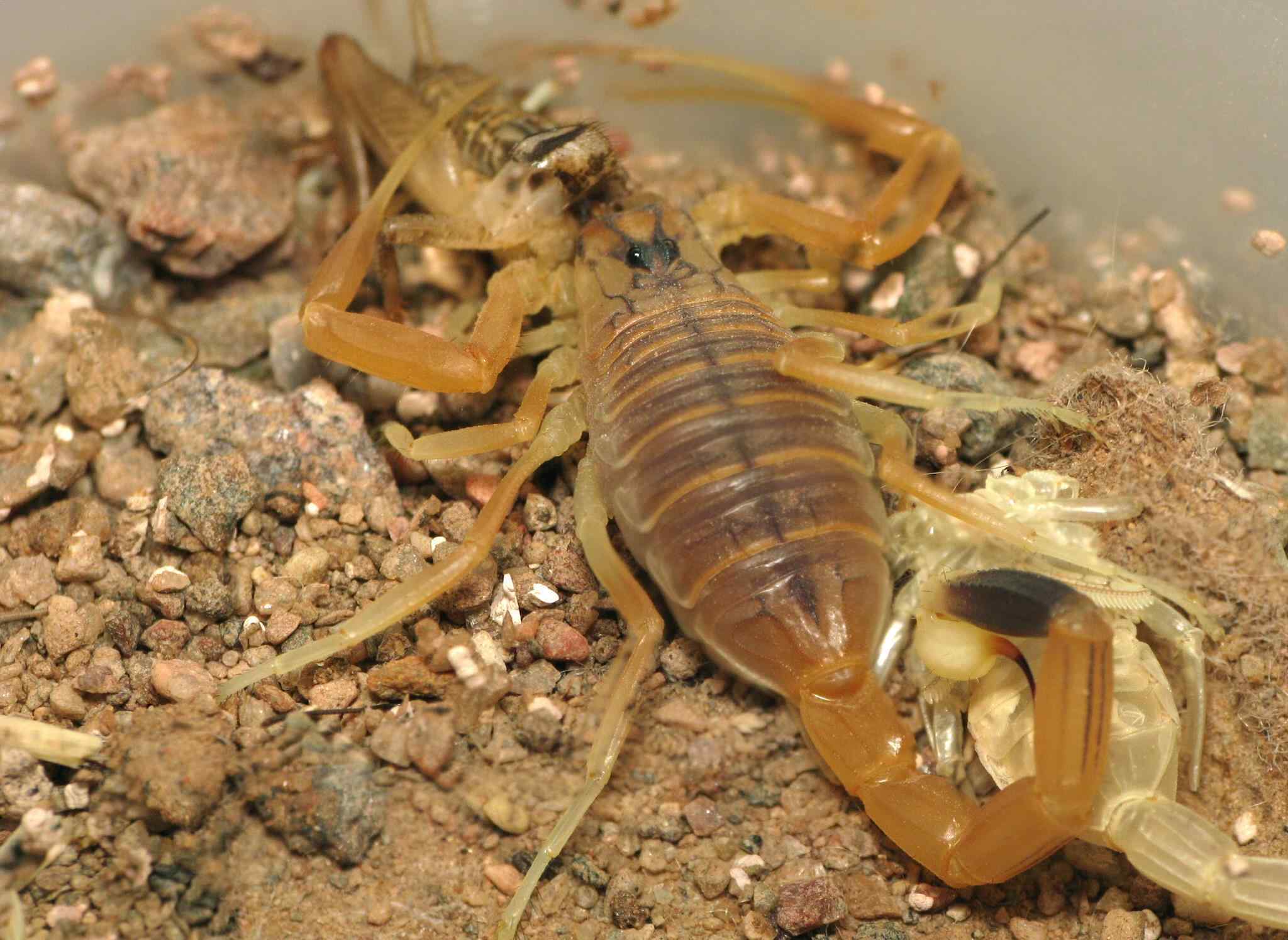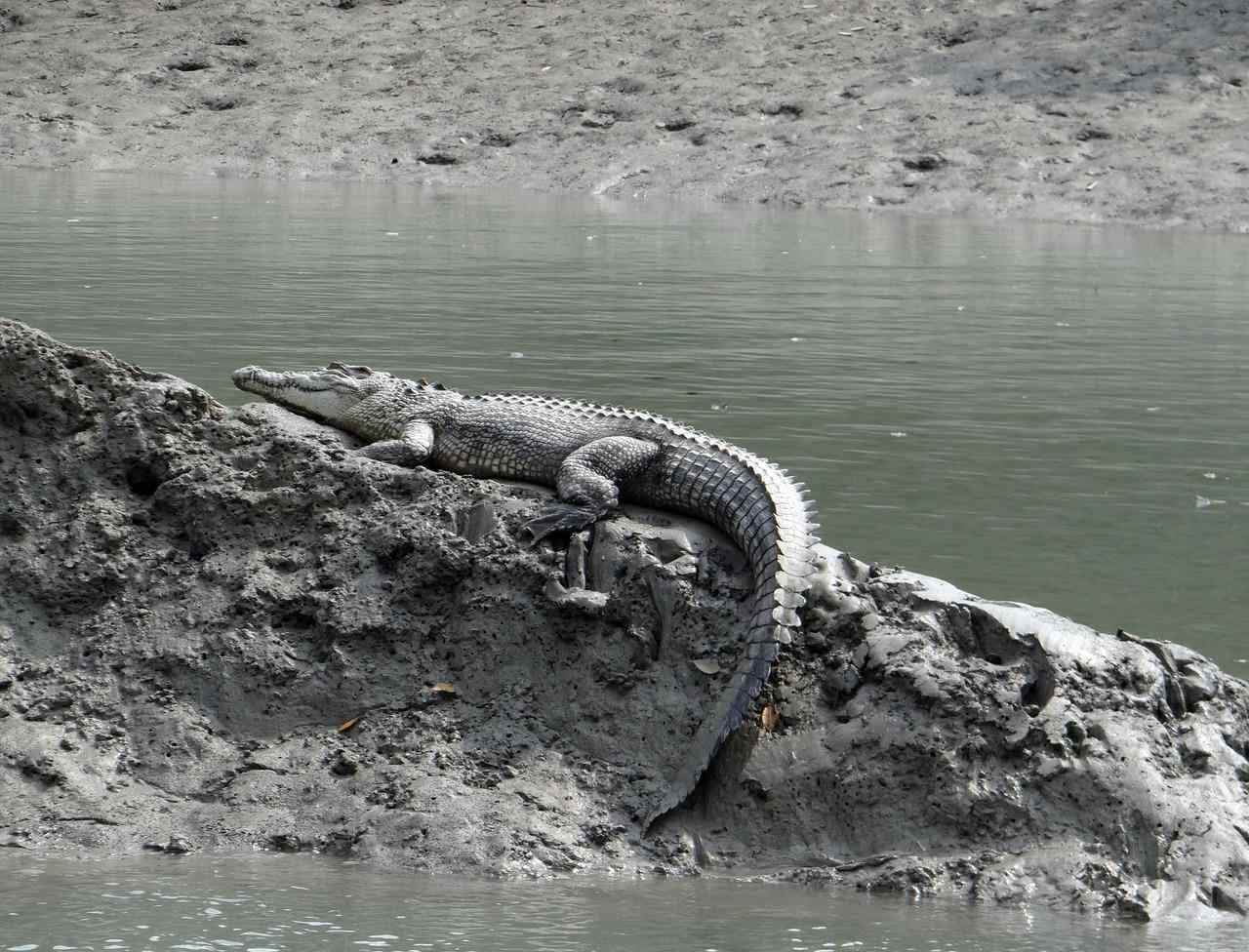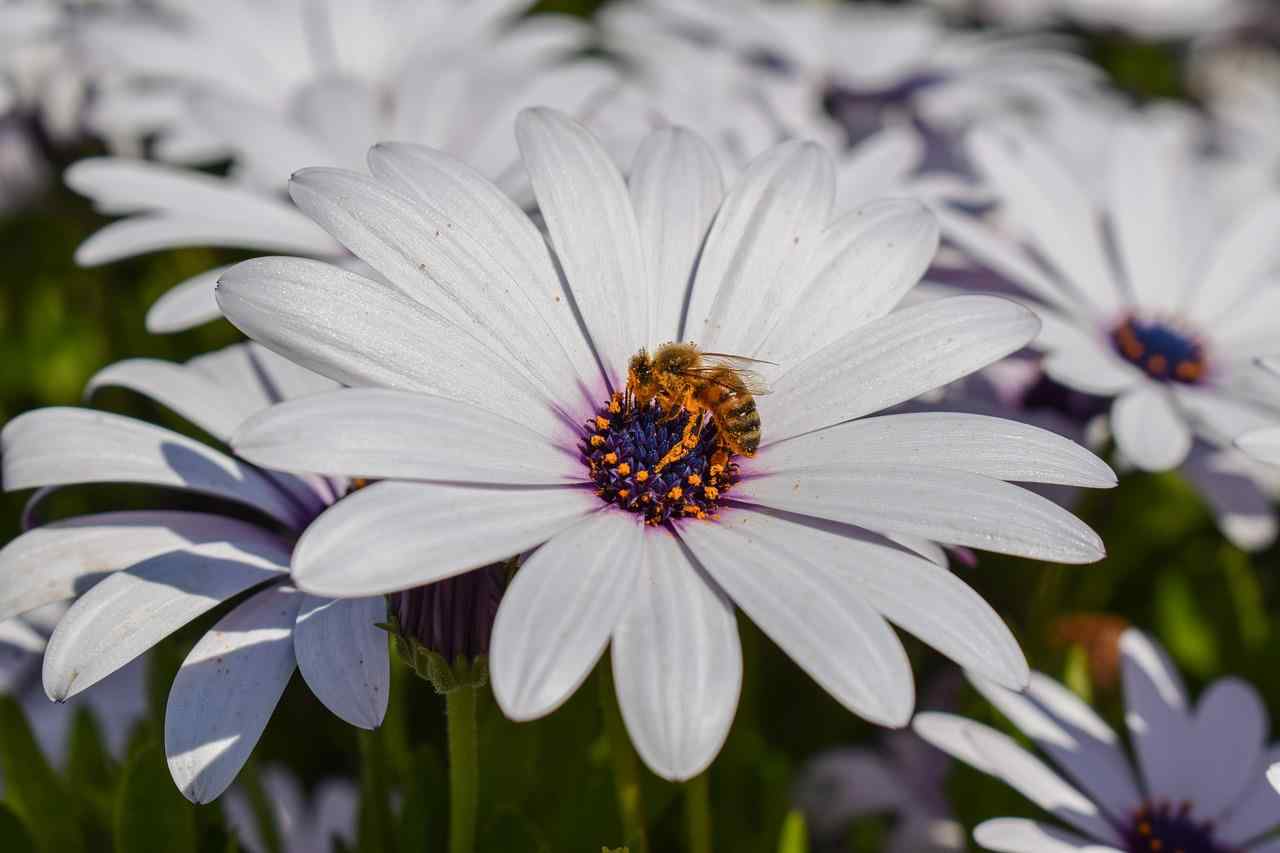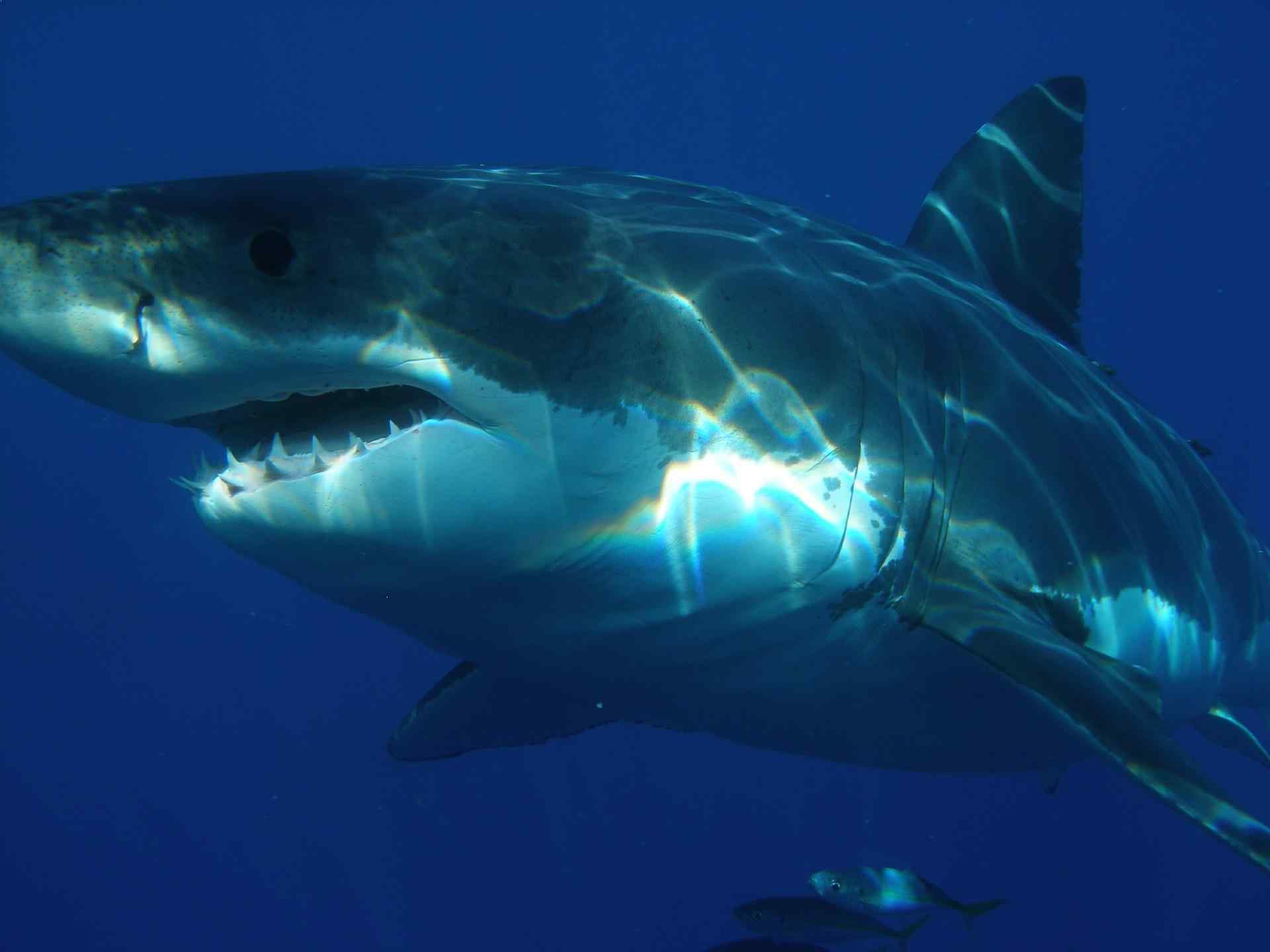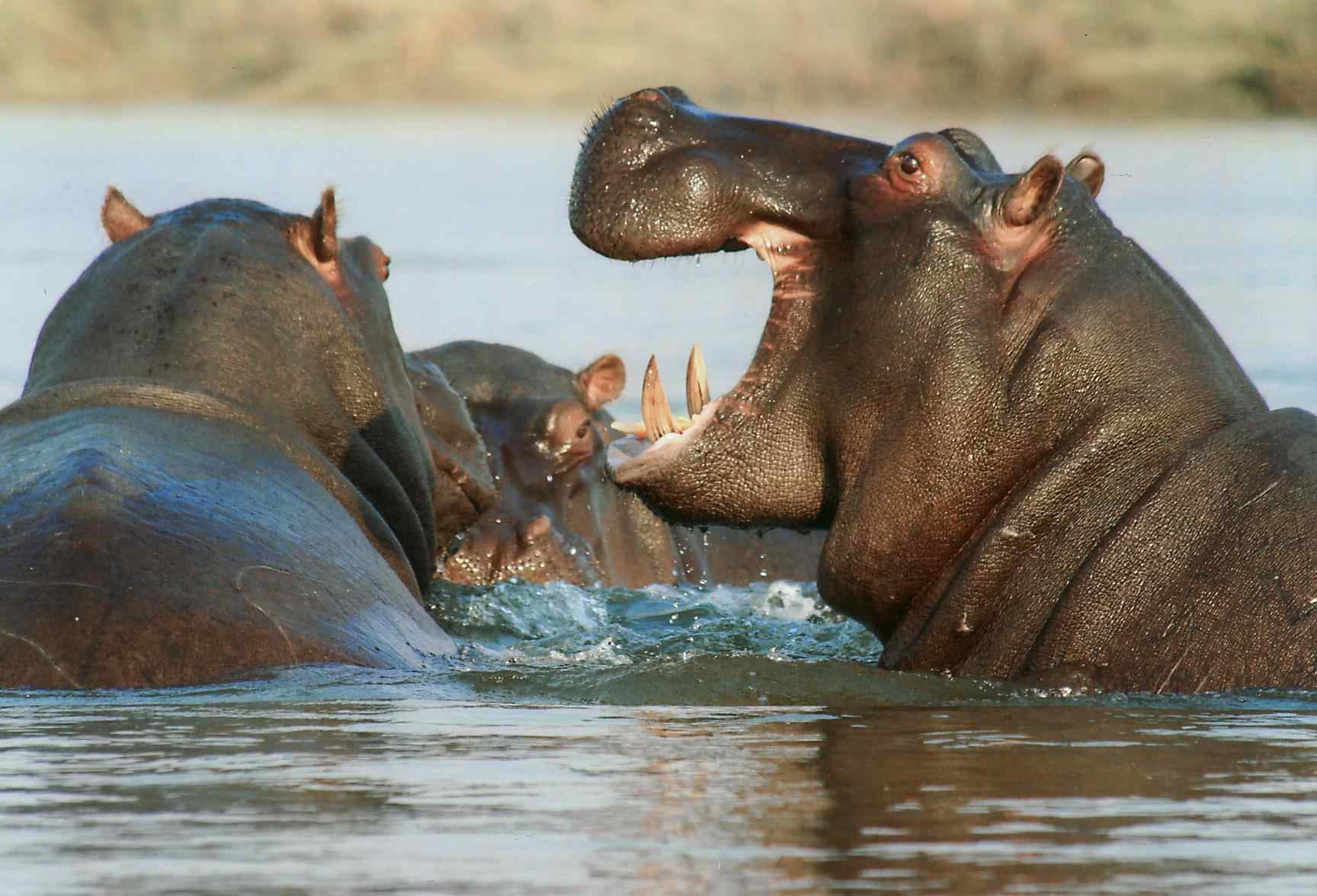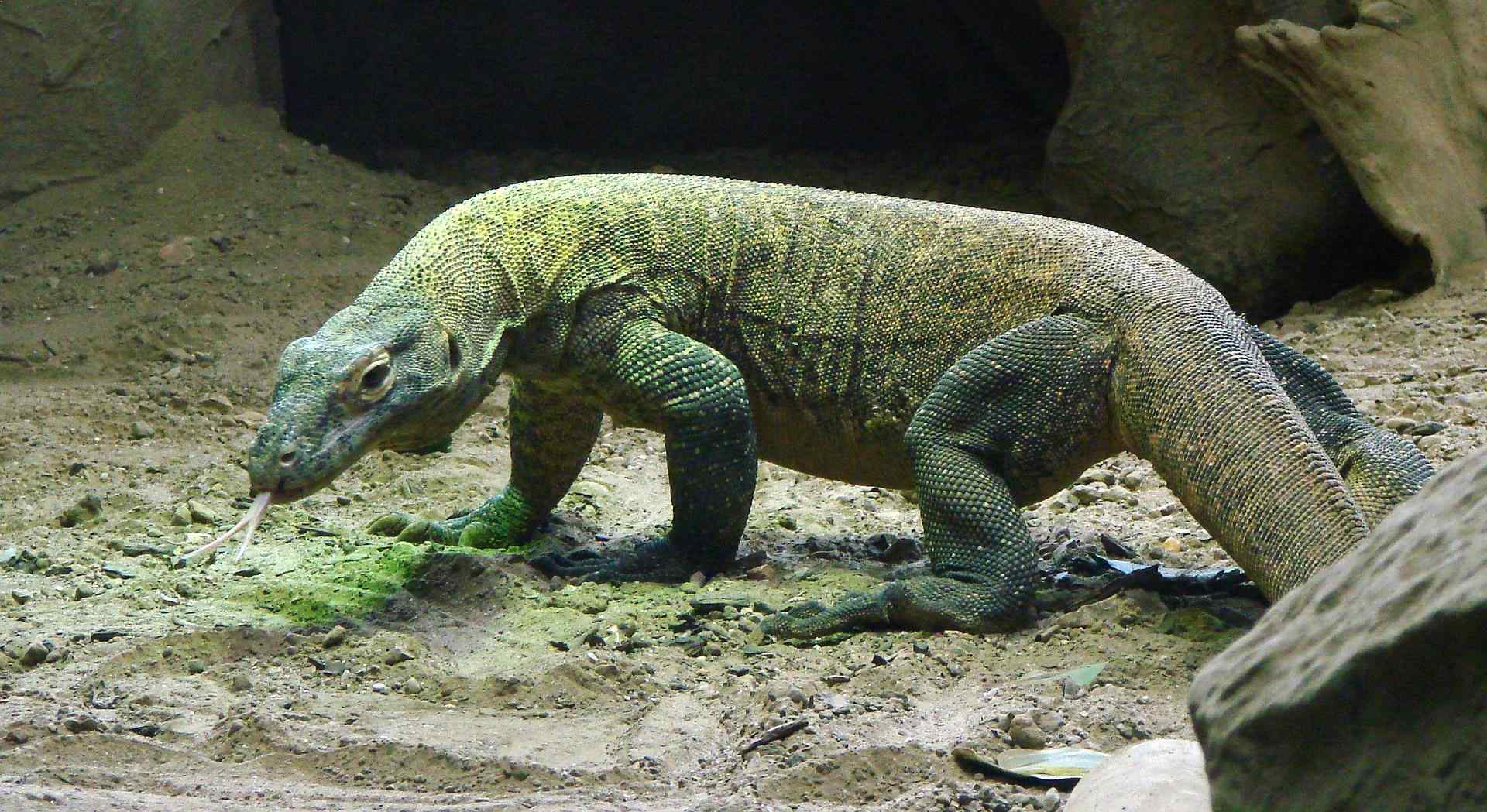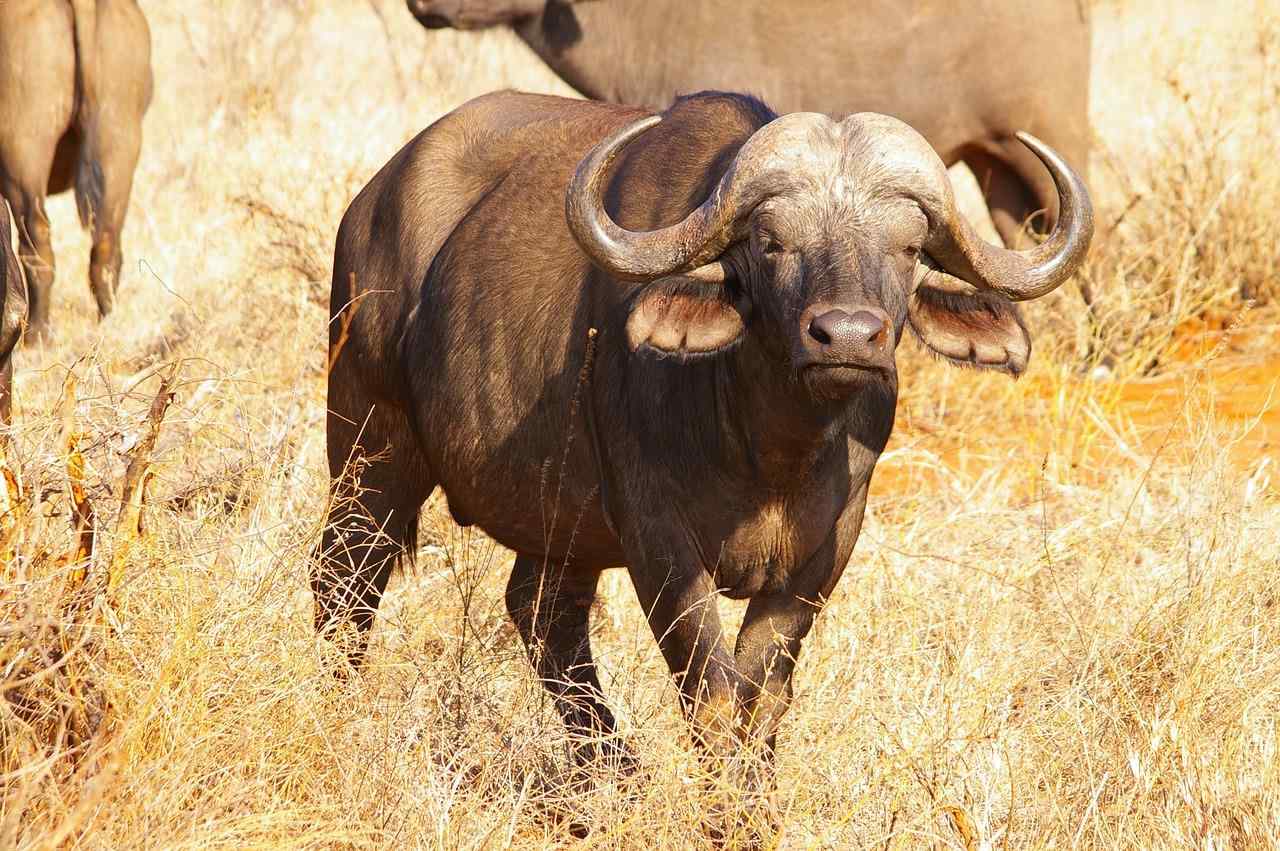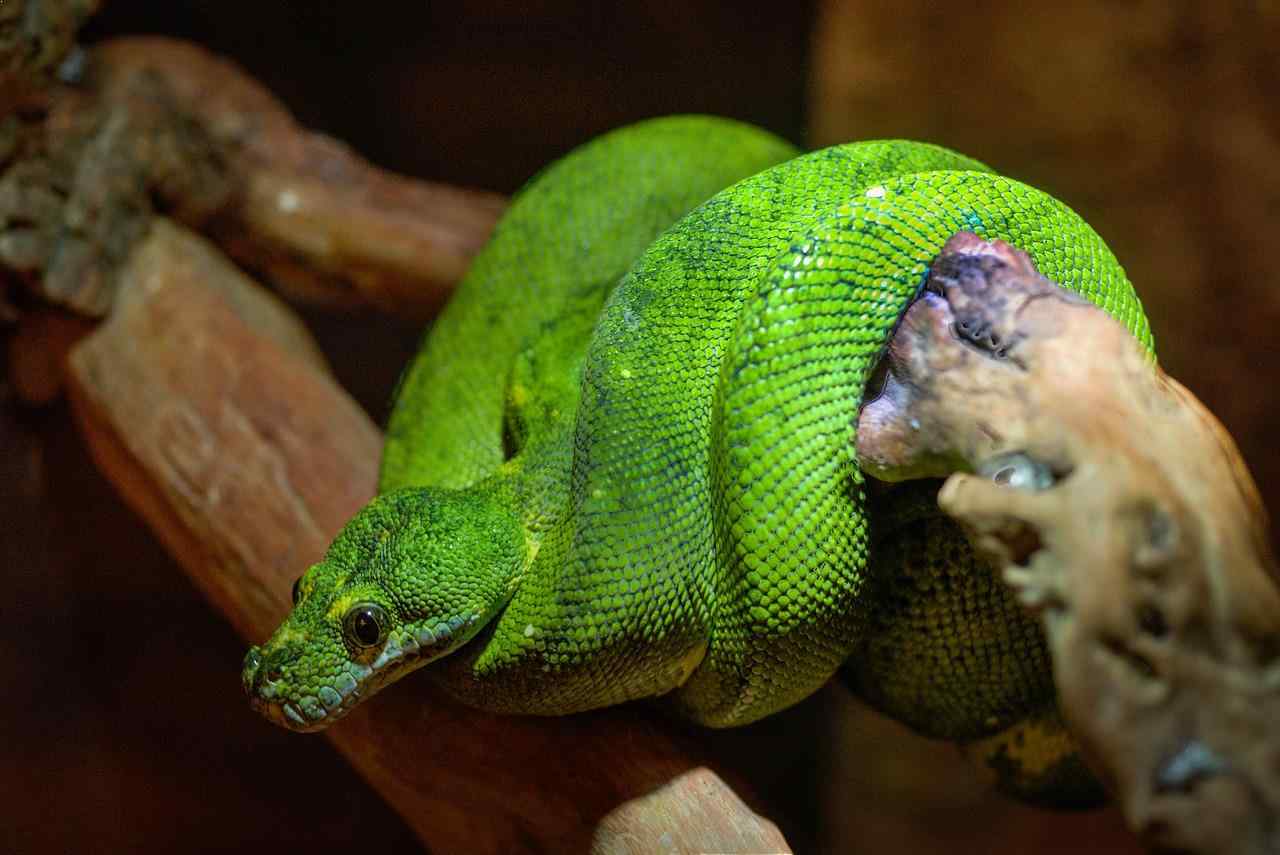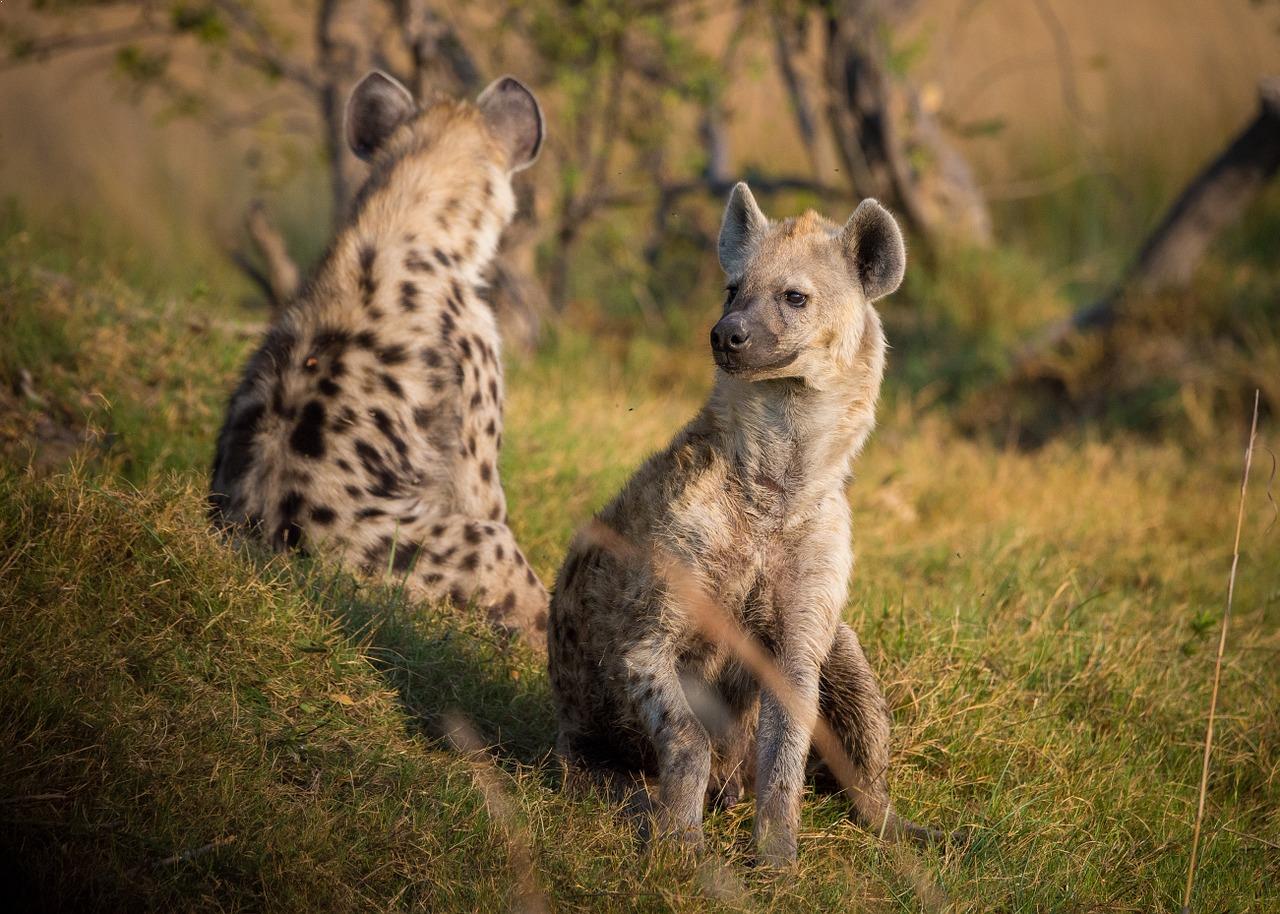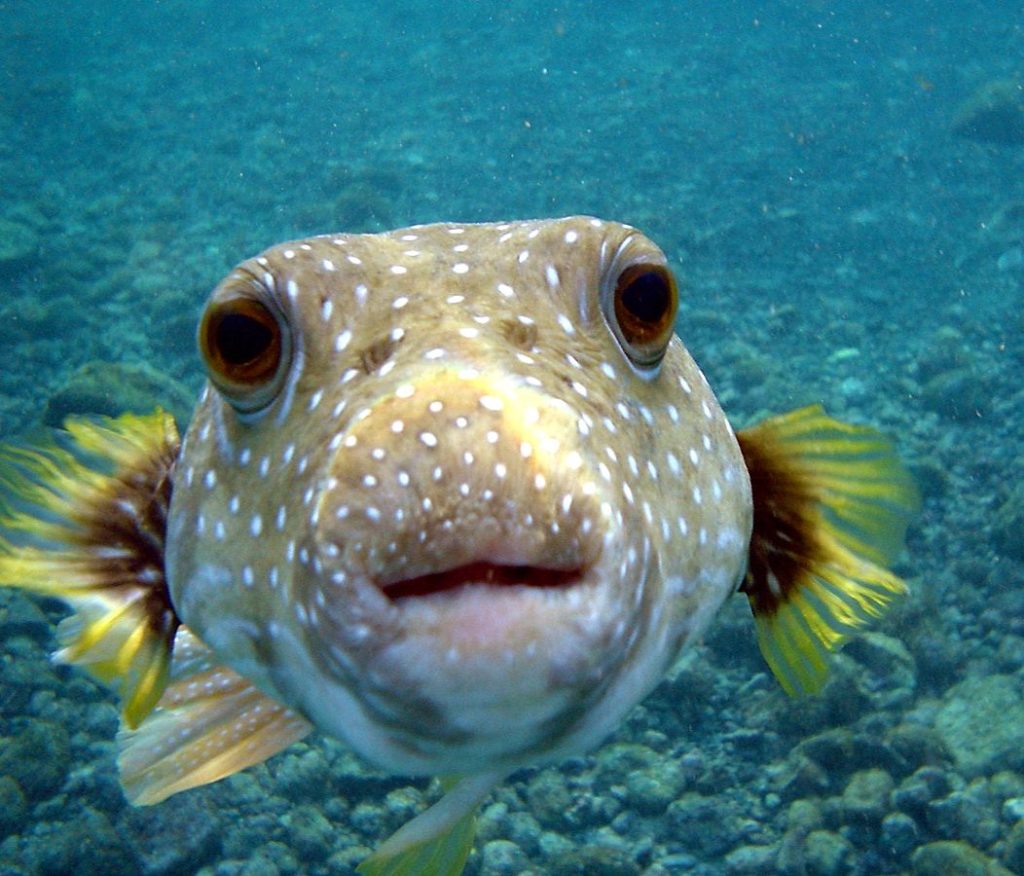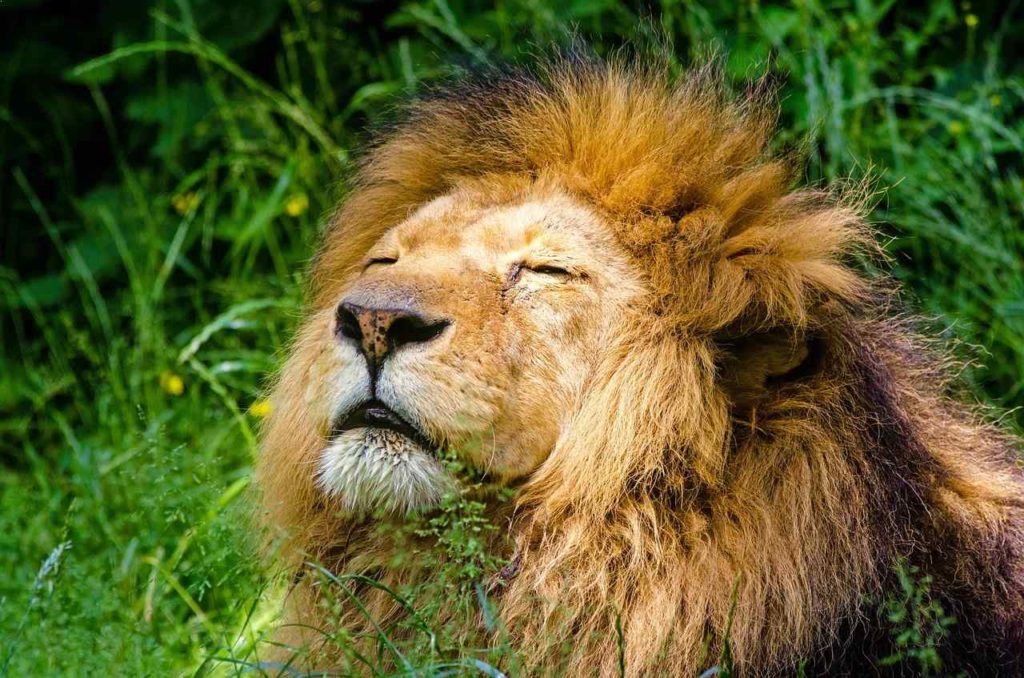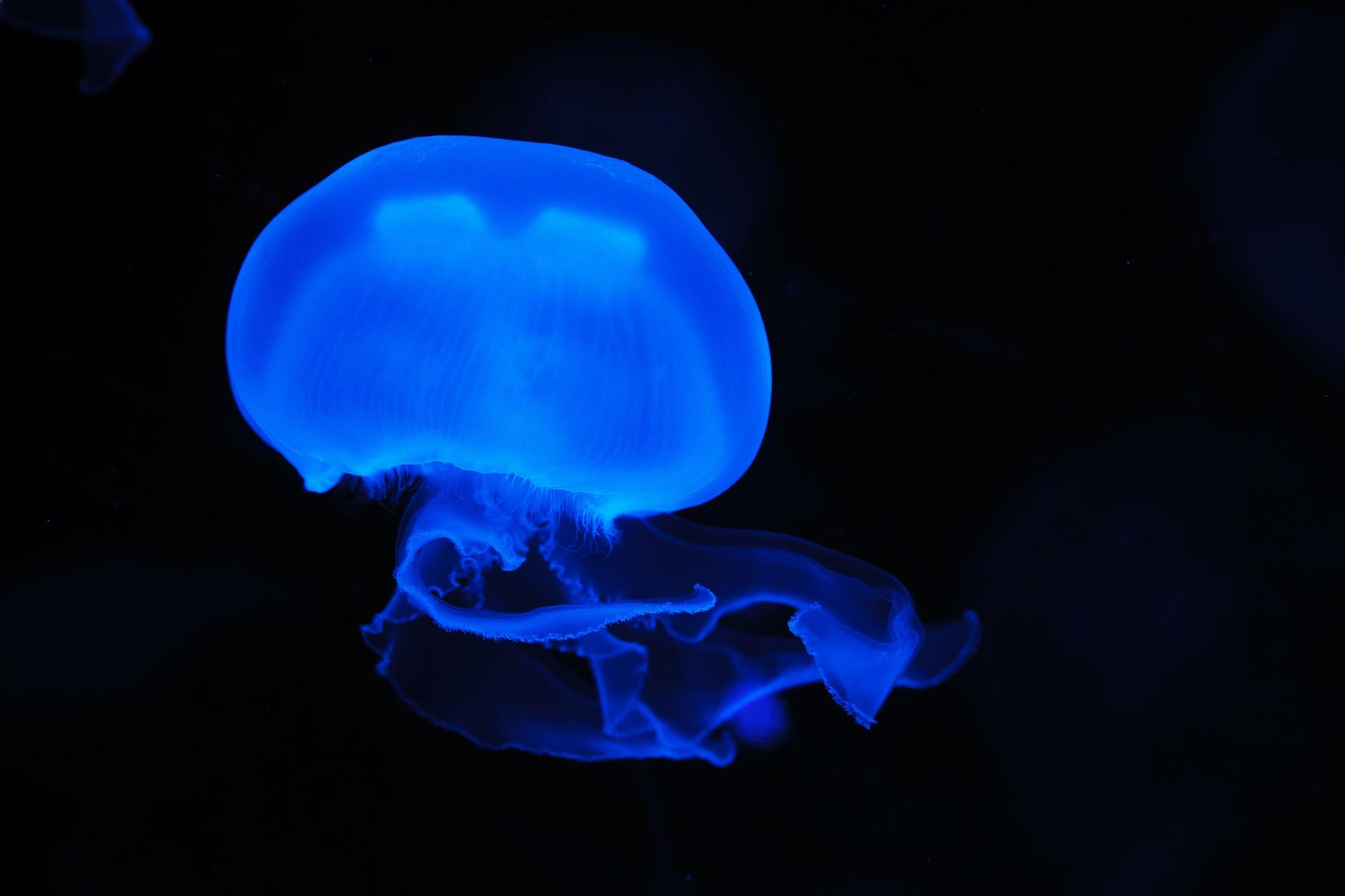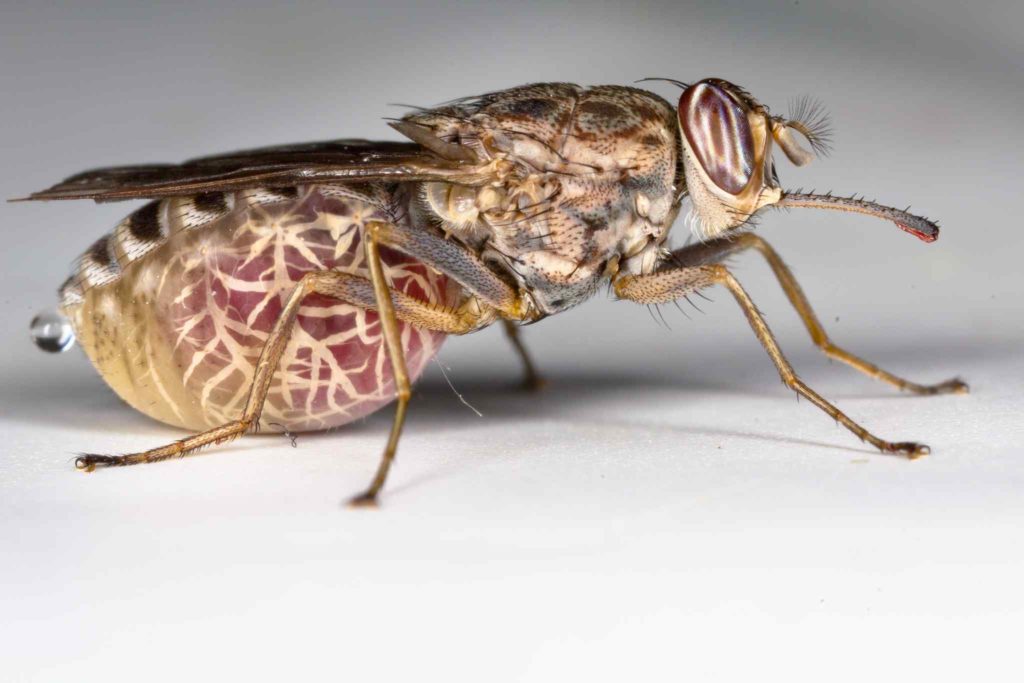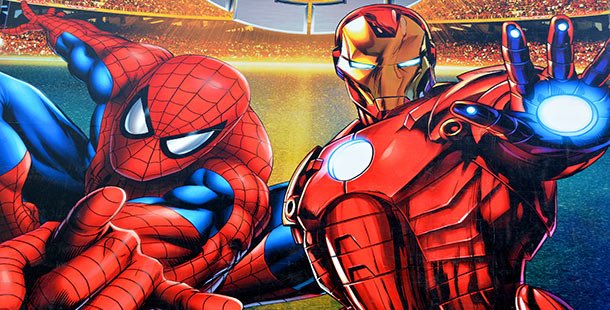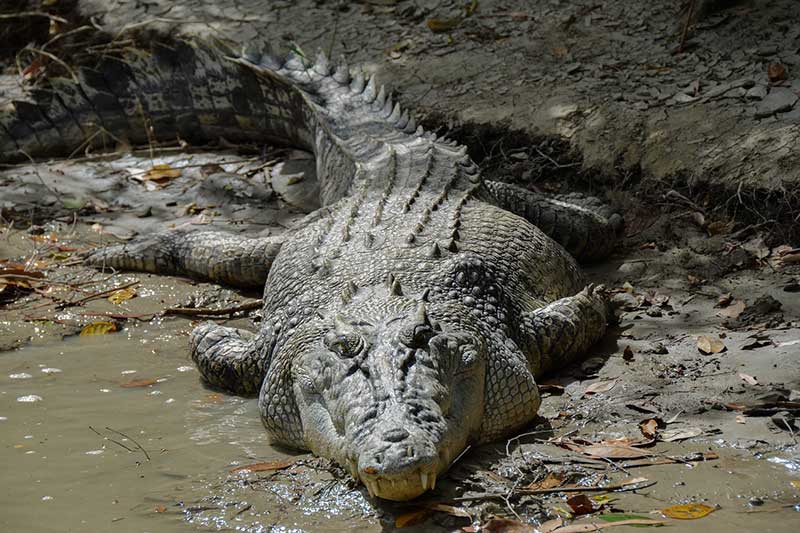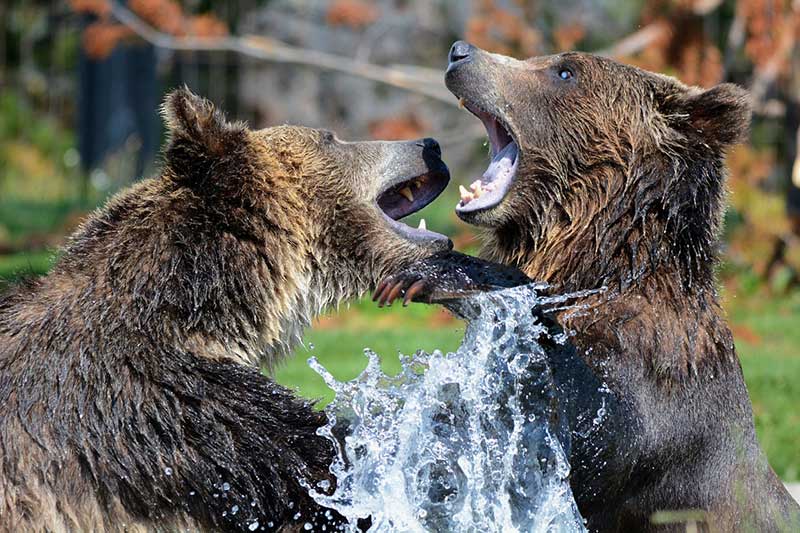We know that you have seen many animals in your life and have an idea also which animal you should stay away from and which animal to love. There are many scenarios that even the most innocent looking animal is the most deadly animal and even the most dangerous one will not hurt you. Let me a few examples that even cute animals can be the most dangerous one. What about puffer fish? They are one of the most beautiful of all the fishes in the world but at the same time, it is one of the most deadly animals alive. So, here we are listing 15 most dangerous animals in the world.
1. Mosquito
It is one of the smallest animals in the world but at the same time one of the most dangerous animals in the world. There are few things which you should definitely know about this small looking deadliest animal. Here we have also listed strongest animals on planet Earth.
- Mosquitoes are small flies that come under the family Culicidae.
- They are responsible for transmitting deadly diseases to 700 million people those results in 3 million deaths annually.
- The loss of blood is very rare but the saliva of the mosquito that causes a rash is very irritating.
- They are responsible for transmitting many diseases like malaria, yellow fever, Chikungunya, West Nile virus, dengue fever, filariasis, Zika virus and other arboviruses.
- The oldest known mosquito is Canadian amber from the Cretaceous which was known 79 million years old. It is one of the dangerous animals in the world.
- There are approximately 3,500 species of mosquitoes and around 175 of them found in the United States. The Anopheles species is a malaria carrier.
- The female mosquito species bite with a pointed mouthpart called a proboscis. They use the serrated proboscis to pierce inside the skin and locate the capillary and after that, they start drawing blood through one of the tubes
Also Read: Top 10 Farm Animals In The World
2. Deathstalker Scorpion
Deathstalker is a species of scorpion that comes from Buthidae family. One of the most poisonous animals is known by various names such as Palestine yellow scorpion, Omdurman Scorpion, and Naqab desert scorpion.
- They are mostly found in desert regions of North America and the Middle East and one of the incredibly adaptive the Sahara Desert Animals
- Deathstalker Scorpion is responsible for 75 per cent of deaths that are caused by the Scorpions on Earth.
- Deathstalker is the most dangerous form of a scorpion.
- The yellow scorpion that is the most deadly one can grow up to 77 millimetres in length.
- The sting of the Deathstalker Scorpion is extremely painful. The people affected with a heart condition and those who are allergic are at much greater risk. It is one of the dead animals in the world.
- Most of the Scorpions capture their prey with the help of their pincers, however, in case of Deathstalker, the pincers are fairly weak so a string is required.
- The Deathstalker scorpion has the strongest poison of all the scorpions in the world.
Also Read: 12 Deadliest Insects In The World
Image Source: Wikimedia
3. African Elephant
African Elephant is also one of the most dangerous animals in the world. Elephants are the world largest land mammal though they are very calm and composed African Elephant have somewhat different kind of nature. There are a few strange animals that are only found in Africa.
- They are known for their aggressive nature. They can grow up to 4 meters tall and weighs around 5.5 tonnes.
- They are known for destroying the whole village and also capable of killing even a rhinoceros.
- African Elephant has two known species African bush elephant and the smaller one is called the African forest elephant.
- They belong to the family genus Loxodonta. Bush elephants are the largest living terrestrial animals and the forest animals are third largest in the world.
- Elephants are vegetarian so would not attack humans for blood but African Elephants are one of the dead animals in the world because of the staggering strength and power. Despite being one of the heaviest animals in the world, they can run at a speed of 25miles/hour.
- Scientifically known as Loxodonta Africana are herbivores in nature and can eat over three hundred pounds of food daily. Daily approximately 18 hours of African elephants searching for food such as grass, plants, and bark to eat.
- The eyesight of the elephant is pretty weak but have a very good sense of smell and hearing. Also, African elephants are known for drinking a lot of water i.e approximately 52.8 gallons of water at a single time.
Also Read: Top 10 Cruellest Animals In The World
4. Saltwater Crocodile
Saltwater Crocodile also knew as the estuarine crocodile and Indo-Pacific crocodile is known for eating everything from water buffalo to sharks that come into his territory. The saltwater crocodile is also in apex predators in the world
- They use the technique known as ‘death roll’ for killing. In this technique, the animal which is hunted made very aggressively flips into the water until it drowns.
- They are the largest living reptiles in the world. Also, Saltwater Crocodile is the terrestrial and riparian predator in the world. Hence they are one of the dead animals in the world.
- The male crocodile can grow up to 6.7 meters and weighs around 1,360 Kg. The female species are much smaller and can grow up to 3 meters only.
- As the name suggests they can even survive in salt water but mostly found in the deltas, lagoons and lower stretches of rivers.
- They are capable of killing almost any animal that enters its territory whether it is fish or other predators such as sharks, mammals, and humans. This is the reason they are one of the most dangerous animals in the world. You can also read about the most dangerous amazon rainforest animals.
- The species have a long lifespan and can live up to 65 years. Also, they are known to be fantastic swimmers and can travel up to 900km.
- Saltwater Crocodile loves to eat fish, mammals and birds and prefer hunting at night.
5. Africanized bee
Africanized bee has been originated by cross-breeding African bees with European bees. The idea of cross-breeding is to produce more honey. They have been kept in the restricted place but 26 large groups of bees escaped in 1957. Along with dangerous animals, here are few smartest animals in the world. They are also known as one of the intelligent animals that exist on Earth.
- Africanized bee is also known as killer bees.
- They have been spread out in South and Central America. They also arrived in North America in 1985.
- Africanized bee is known for defensive behaviour and always found in dense groups.
- They are more aggressive than regular bees and this is one of the reasons considered to be one of the dangerous animals in the world.
- Africanized bee is also spelt as Africanised honey bees.
- They create nests in the holes in the ground and destruction of their habitat will create a sense of anger among them and people should definitely avoid it.
- The queen of the Africanized bee has the longest lifespan and they live up to one to three years, however, worker bees live for around one month and drones usually live from 5 to 10 weeks.
6. Great White Shark
Great White Shark is very common marine animals and found in oceans around the world. They are very large in size and can grow up to 6.4 meters and weigh around 3324 kilograms.
- White Shark has killed many humans in water than any other water species. This is the reason they are one of the most dangerous animals in the world. It is also one of the fierce animals in the world.
- Great White Shark usually found in clays and they attack with surprise and that too with great speed. They usually hunt in the morning.
- They are also known by the names great white, white pointer and white shark.
- White Shark reaches its maturity in 15 years and has a whopping lifespan of 70 years. They are the longest-lived cartilaginous fish currently known.
- They don’t have any predators except the killer whale.
- It is also one of the world’s most amazing animals in the world.
- Talking about the appearance, Great white sharks are grey with a white underbelly and have a powerful tail that helps them to propel through the water at a speed of 60km per hour.
- The sharks have an amazing sense of smell and they can very easily detect a colony of seals two miles away. Also, the species are at the top of the food chain and they are not able to kill by other creatures in the ocean.
7. Hippopotamus
Hippopotamus are mostly found in Africa and that too in the areas of south Sahara desert. They are the third largest living mammal in the world. There are few nocturnal animals that you will see action only in the night.
- They are very unpredictable and aggressive. This makes Hippopotamus as one of the most dangerous animals in the world.
- The hippopotamus is planted eaters but they are also known to attack and kill people without being provoked.
- One of the toughest animals in the world have short legs but still, they can run up to 30 km/hour. It also weighs around 1500 kilograms.
- After elephant and rhinoceros, Hippopotamus is the third largest land mammal in the world.
- The hippopotamus is known for its wide opening mouths and barrel-shaped torsos. They are known as one of the most aggressive animals in the world.
- The Hippopotamus can travel upto 10km in search of food. Also, they spend around 5 hours in grain and can eat 68 kg of grass each night, However, considering their enormous size the food intake is a little low.
- Both birth and reproduction of the Hippopotamus occur inside the water. Hippo calves weigh approximately 45kg at birth and can survive on land or water by closing their ears and nostrils. Each female can produce one calf every two years. After the birth, mother and young join other Hippopotamus schools that provide them with protection against crocodiles, lions, and hyenas.
8. Komodo Dragon
Komodo dragon is known for eating anything from birds, mammals, buffaloes and the most important part is that they also dig up bodies from shallow graves. These are the reasons why they come under the 10 most dangerous animals in the world.
- They are also known as Komodo monitor and mostly found in Indonesian islands of Komodo, Rinca, Flores, Gili Motang, and Padar.
- Komodo Dragon comes under monitor lizard family Varanidae. They are also the largest living species of lizard. They can grow up to 3 meters and weighs around 70 kilograms.
- They only have to eat once a month.
- They dominate the ecosystem in they live in because of their large size.
- They love eating deer and also carrion. They also attack humans in the areas of Indonesia in which they live in. It is the reason why it is one of the most deadly animals in the world.
- Talking about the appearance, Adult dragon are brown, grey or reddish skin colour, however, younger ones have a green body covered with black and yellow stripes.
- The saliva of the Komodo dragons contain approximately 50 types of bacteria and one bite is enough to poison its prey.
9. African buffalo
The African buffalo is one of the most dangerous animals in the world. They are known for killing more people in Africa than any other animal. They are one of the most deadly animals for humans because they kill more than 200 people annually by trampling them. They also attack without being provoked. There are a few strange animals that are only found in Africa.
- They are mostly found in forest areas of Central and West Africa.
- They are a large animal that can grow up to 1.7 meters tall. They also weigh up to 900 kilograms.
- African buffalo are very dangerous to humans.
- They also attack without being provoked.
- African buffalo have few predators but they are very much capable of defending themselves.
- African buffalos are mostly seen in large groups that can include a thousand animals and as small as 12 animals on average.
- African buffalos mainly feed on the grass and hence known as grazers, however, once the grass sources are scare they eat shrubs and trees.
10. Boomslang
Boomslang is a venomous snake that belongs to the family Colubridae. Boomslang is one of the most dangerous animals in the world because they are hemotoxic that disables blood clotting.
- They generally don’t attack humans but when they do then they are the deadliest one. It has hemotoxic that directly attacks blood clotting.
- The victim slowly dies as it will bleed from every pore of their body.
- The eyes of the snake are exceptionally large and the head has an egg-like shape.
- They are green in colour with black blue edges on the body.
- Boomslang is native and restricted to Sub-Saharan Africa.
- The species can survive 8 years in the wild.
- The mating season of boomslangs can take place from July to October. Males used to fight with each other to dominate and get the opportunity to mate. The female species lays 10 to 25 eggs inside the hollow trees and logs beneath decaying vegetation
11. Hyena
The dog-like carnivores creature lives in savannas, grasslands, sub-deserts and forests of Africa and Asia. There is a total of 4 species of Hyena that exist that depends on size and type of diet. The names are spotted, brown, striped, and the aardwolf. Females hyenas are larger than males and are more dominant than males with characteristics of hunters and scavengers in both species. One of the most dangerous animals in the world usually hunt at night and they mark their territory by white droppings produced in the anal gland. The substance has a strong smell and it informs Hyenas that the territory is already occupied. The average lifespan of the species is 0-12 years in the wild and up to 25 years in captivity. It is also listed as one of the loudest animals in the world.
12. Puffer Fish
Puffer Fish is known for its unique ability to transform and enlarge its body in a split of a second. There are around 120 species of puffer fish that loves to live in the warm waters of the Indian, Pacific and Atlantic Oceans, however, only 30 species are living in freshwater. It varies in size with a one-inch long pygmy puffer and freshwater fish can be two feet long. One of the most dangerous animals has enough toxin to kill 30 adult men. The toxin is located on all parts of the body and only specially trained chiefs can clean the fish properly and prepare a good meal out of it. It is used as a meal known as fugu in Japan as a delicacy.
13. African Lion
African Lion is mostly seen in sub-Saharan Africa. Initially, they were used to be found all over Africa, however, now they have disappeared from North Africa and are at risk of extinction in West Africa. They love to live in savannahs and grasslands because plenty of food and water is available. One of the biggest cats in the world lives in groups known as pride. The pride can be of 30 lions depending on how much food and water is available. Females lions are the main hunters and while they are out for food, the males guard the territory and take care of their young.
14. Box Jellyfish
The most dangerous Jellyfish and one of the dangerous animals in the world are also known as sea wasps and marine stingers. The names come from the cube-like shape of their bell and average lifespan of the species is less than a year. The invertebrate animals do not have a backbone in their bodies and mostly seen in light blue in colour. Talking about the appearance, they have dozens of tentacles grow from each corner of the bell. The tentacles can be of 10 feet in length and have about 5,000 stinging cells.
15. Tse Tse Fly
Tse Tse Fly is an insect that belongs to the housefly family. There is a total of 23 species of tsetse flies that can be found in mid-continental Africa. One of the most dangerous animals mostly seen in mid-continental Africa and can induce fatal diseases in both humans and animals. The insect can reach a length of 0.2 to 0.6 inches and appear in yellowish brown or dark brown in colour with dark markings on the thorax that is the chest. The larvae of tsetse flies are strong enough to kill a man. The average lifespan of the insect species is one to three months.
Image Source: Oregon State University (Flickr)
These are dangerous animals in the world. Do post your comments.

You’re moments away from learning about the most dangerous animals in the world. Sometimes distinguishing between furry cuteness and pure destruction is not an easy task. In fact, many of the animals kingdom’s cutest critters also happen to be its most prolific killers. You think that cute little puffer fish is adorable? Will you hold your breath as you reach to pet it? The answer is yes. Forever. So keep that in mind as you read through our list of the worlds most dangerous animals.

This highly venomous scorpion residing primarily in North Africa and the Middle East is responsible for over 75% of scorpion related deaths every year. Although healthy adults usually only feel unbearable pain, children stung by this dangerous creature suffer fever, coma, convulsions, and paralysis before their lungs fill up and they drown in their own fluids.
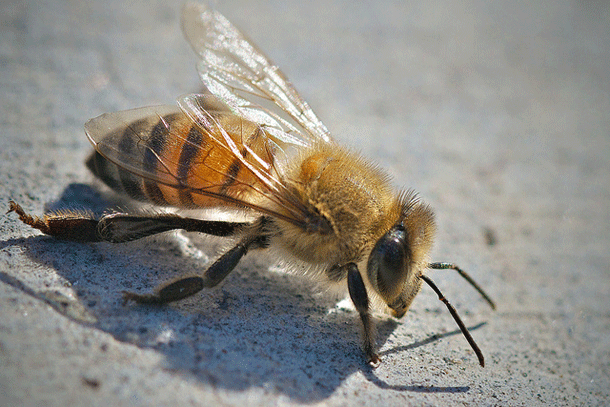
An experiment gone wrong, in 1957 a Brazilian bee keeper who was trying to interbreed European and African honey bees accidently let some of his “pets” get away. Much more aggressive than their European counterparts, these genetically mixed “killer bees” have since then spread through out the Americas. They have come to be feared in some regions because of their tendency to swarm relentlessly and aggressively chase their victims for miles.
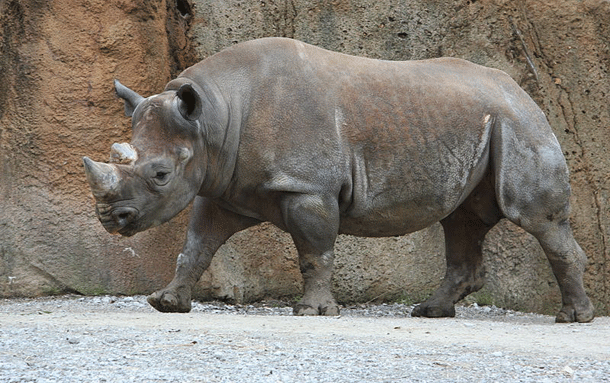
Rhino related deaths are not an uncommon occurrence in many parts of the world. Having terrible eyesight, they are easy to startle and once they have you in their sights it can be hard to make an escape (unless you can run faster than 40 mph). See the horn? Enough said.
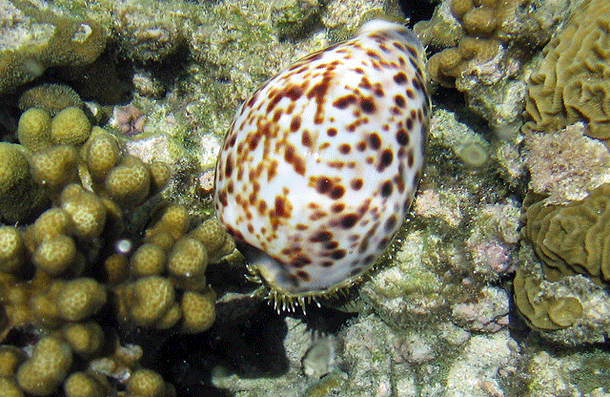
One drop of venom from this little bugger is enough to end 20 human lives. Sometimes colloquially known as the “cigarette snail,” it has been said that when you are stung by this creature, you’ll have just about enough time to smoke a cigaret before you stop breathing. It’s not like it matters anyway though…there is no antivenom.

Lying camouflaged on the ocean floor, this ugly little mass of destruction calmly waits for other fish to swim by before opening its jaws with lightning speed and consuming its prey…all in less than .015 seconds. Also known as the “worlds most venomous fish”, stepping on its spines will at best cost you your leg and at worst, your life.
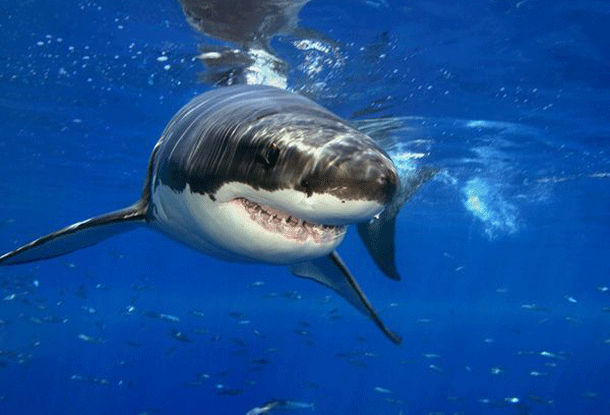
These legendary predators have a terrible time distinguishing between the edible and the non-edible. There chosen method? Sampling. They sample buoys, boats, surfboards, humans, anything that floats. Contrary to popular belief, however, they really aren’t man-eaters. Humans are too bony, and after the initial bite, they usually leave you to bleed out in the water.
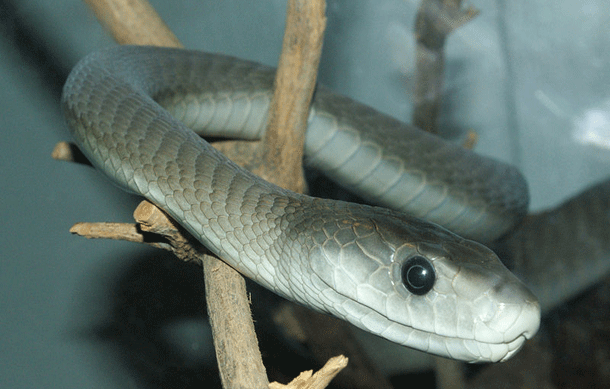
One of the most feared creatures in the world, some experts have even called it “death incarnate.” In Africa it is the source of numerous myths and legends and it is widely known for being highly aggressive, very fast, and attacking without provocation.
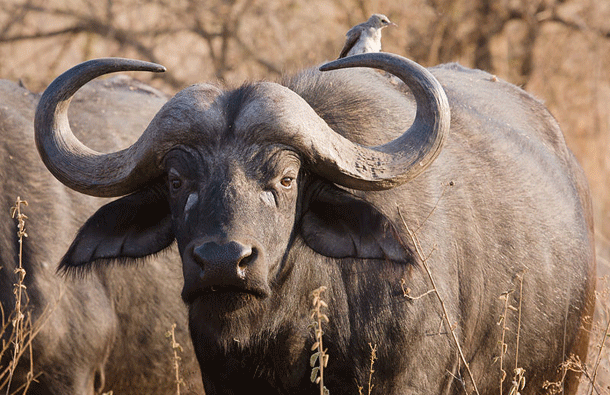
Having never been successfully domesticated, this highly unpredictable, dangerous creature does not play nice with humans. Throughout Africa it is known as the “widowmaker” or “black death” and is responsible for more fatalities every year than any other large animal on the continent.

Packed into 2 inches of colorful amphibian is enough poison to kill an army of 20,000 mice. This means that with roughly 2 micrograms, or the amount that would fit on a pinhead, you could successfully stop the heart of a large animal. And to make matters worse, the poison is actually located on the surface of the skin. You seriously can’t touch this.

Unlike most other animals on this list, the world’s largest carnivore is not afraid of you. It has no natural predators and will eat anything that is even slightly meaty, including other polar bears. Although they generally don’t kill humans, it’s probably because there aren’t many of them around to kill.
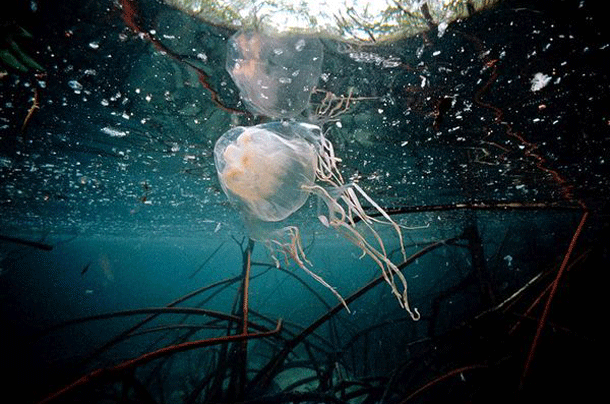
Killing more people every year than sharks, crocodiles, and stonefish combined, this box of death has been labeled “world’s most venomous animal.” Its venom is so potent in fact, that in some cases treatment consists of little more than last minute CPR.
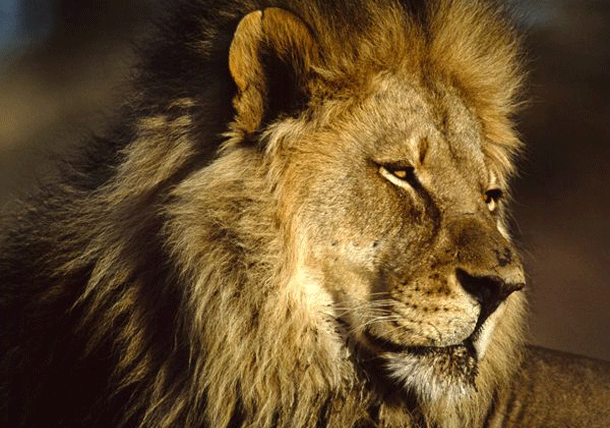
While humans are generally not on their hit-list, some lions have been known to actively seek out human prey. One famous case was that of the Tsavo man-eaters in 1898 who mauled and killed 28 railway workers in Kenya over a 9 month period.
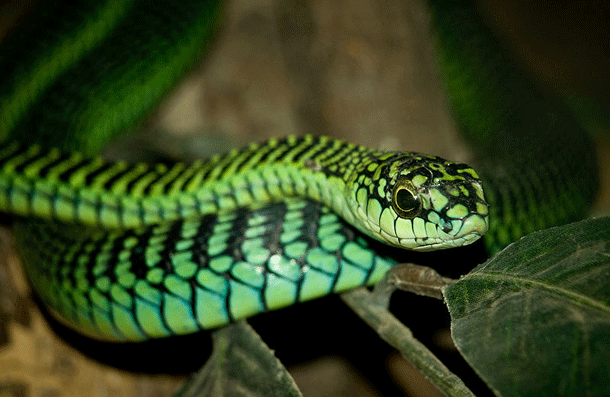
Although they are relatively shy and don’t generally attack humans, when they do, things can get messy. Boomslang venom is a hemotoxin that disables blood clotting. In others words, its victims slowly die as they bleed out from every pore in their body.
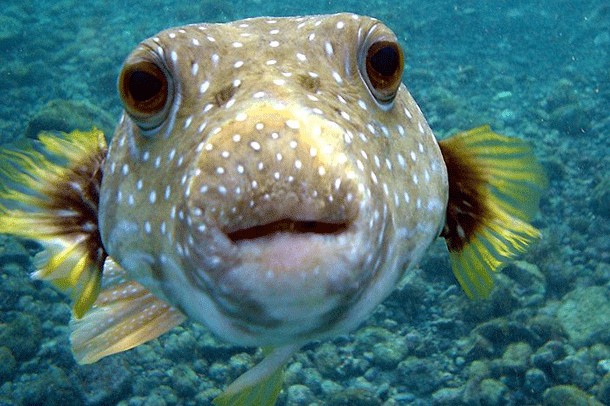
Considered one of the most poisonous vertebrates in the world, if you have read our article about the 25 strangest foods in the world, you know that it is a delicacy in Japan. Puffer poison will, however, paralyze your diaphragm and stop your breathing if you fail to prepare it correctly.
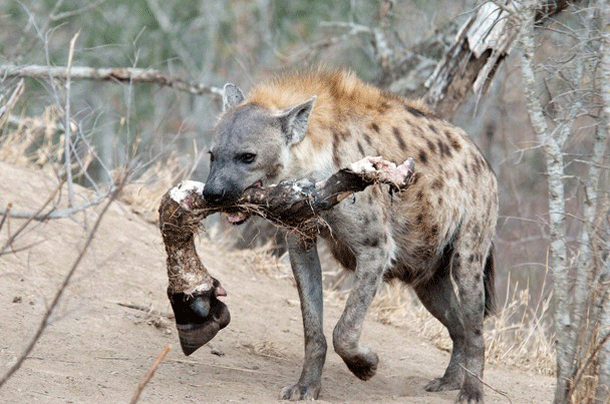
While these predators may be wary of human interaction during the day, after sunset the paradigm shifts. Although hyenas have been known to hunt humans throughout history, the behavior tends to increase during wartime and disease outbreaks due to their strong affinity for human corpses.
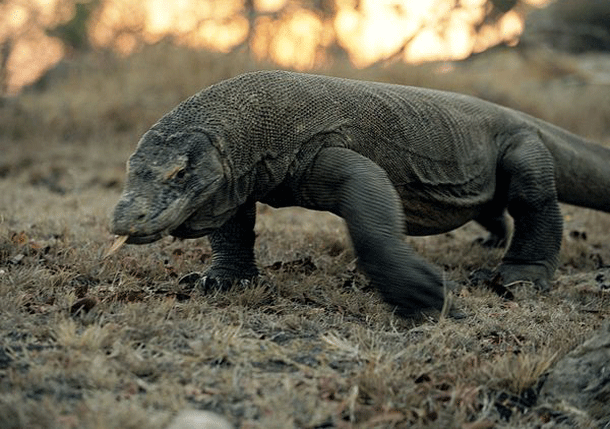
Very much like Polar Bears, Komodo Dragons are not picky eaters. They will eat anything from birds to water buffalos to humans and they have even been known to dig up bodies from shallow graves. They are prodigious hunters and will wait stealthily until their prey approaches after which they will charge forward, rip out its throat, and retreat while it bleeds out. Once again, like Polar Bears, the only reason their human kill count is so low is probably due to limited interaction as well as the fact that they only really need to eat once a month.
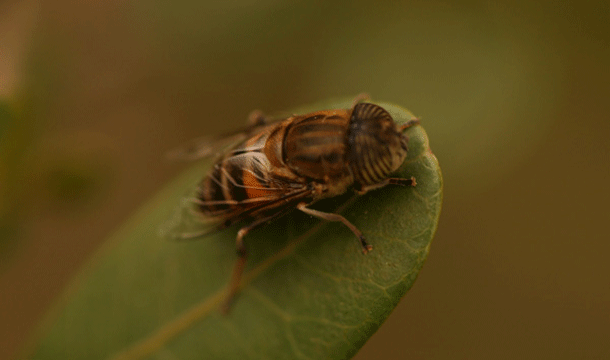
This large blood sucking fly is the primary carrier of African Sleeping Sickness and is therefore indirectly responsible for killing up to a quarter of a million people every year.
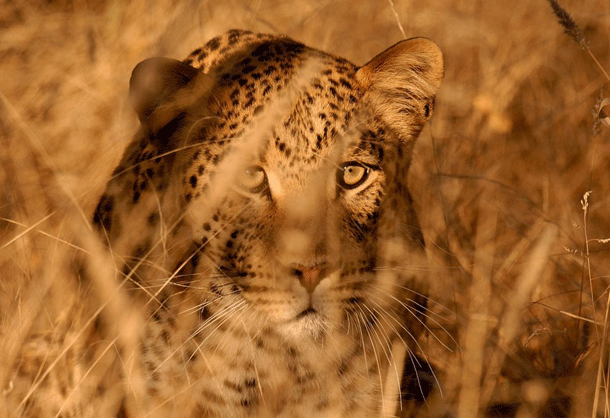
When most animals are wounded they run away and hide. Not leopards. When these dangerous creatures are wounded they become even more dangerous. Not only that, but they’re strong. Anyone who has watched the Discovery Channel knows that they like to hide their prey out of reach. Translation: they drag dead antelopes up trees.
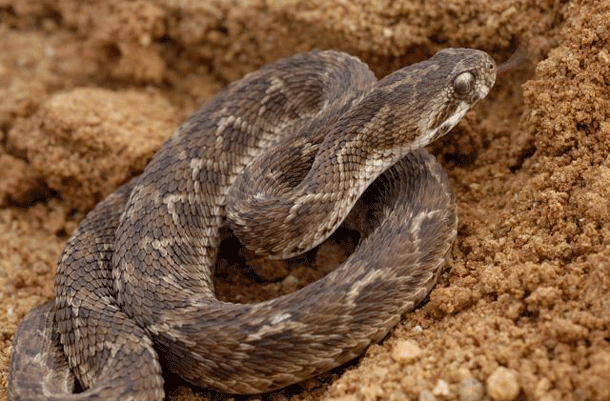
Responsible for the majority of snake related deaths in the world, this viper uses a hemotoxin similar to that of the boomslang. Unfortunately most of the bites occur in areas that lack modern medical facilities so the victims slowly bleed to death over the course of several weeks.
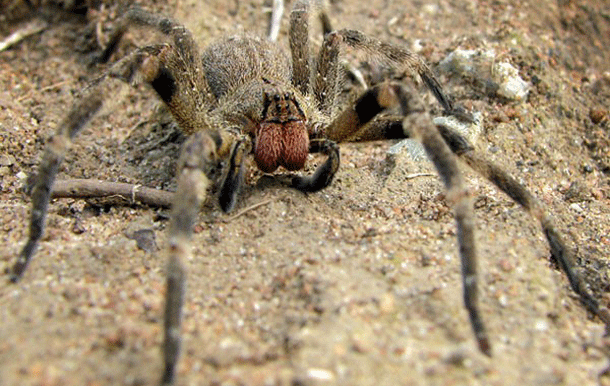
Meet the most venomous spider in the world, according to the Guinness Book of World Records. What makes this critter so dangerous though is also how it got its name – a tendency to wander. They are often found hiding in houses and cars of densely populated areas, especially during daytime. Not a good combination.
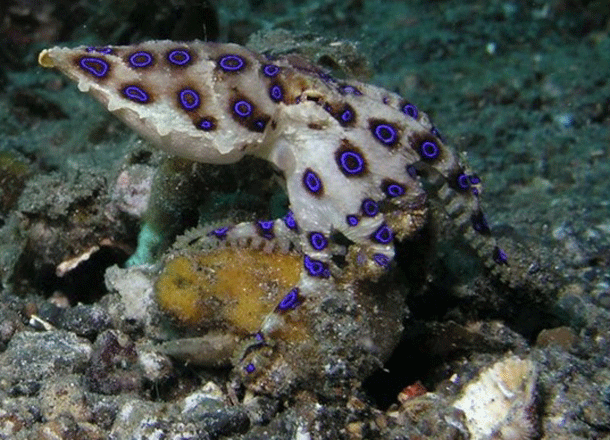
About the size of a golf ball, don’t let its small stature fool you, this dangerous animal holds enough venom to kill 26 full grown adults and as you may have guessed, there is no antidote. Assuming that your friend ever gets bitten you had better know CPR because you can be sure that within minutes they will be completely paralyzed and unable to breathe. Mother nature, however, shows no mercy and they will maintain their consciousness for the next few hours until the venom is neutralized by their body. This is of course assuming that you, or someone at the hospital, continues artificial respiration.

Although they are mostly herbivorous, they are also highly aggressive and are widely regarded as one of the most dangerous animals in Africa. They have been known to attack humans without provocation even to the point of destroying entire vehicles.
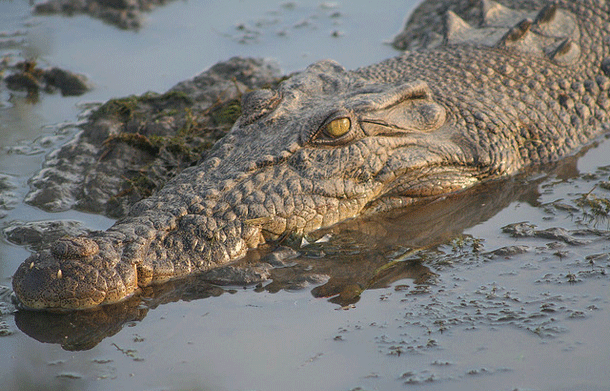
Sitting at the top of its food chain the Saltwater Crocodile has been known to eat everything from water buffalo to sharks. In order to kill its food it make use of a technique called the “death roll” where it relentlessly flips its prey over and over in the water until it drowns and then comes apart.
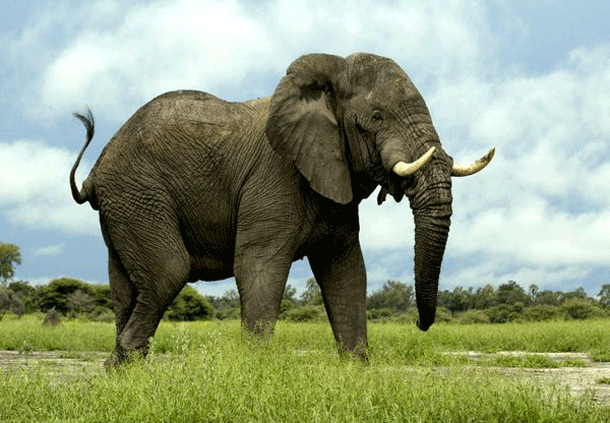
The world’s largest land animal, elephants can be fiercely aggressive and have been known to trample even a rhinoceros or two to death. They seemingly have the capacity to display bouts of rage and have even engaged in activities that have been interpreted as vindictive, razing entire villages in the process.
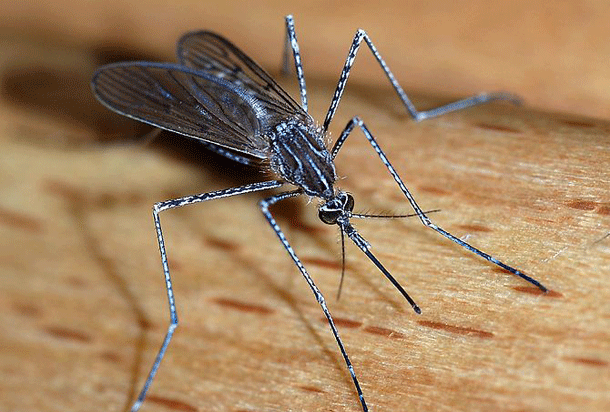
Moving from one of the largest animals in the world we now come to one of the smallest. As small as it is though, it is also the deadliest. It has been estimated that mosquitoes transmit diseases to almost 700 million people annually resulting in 2 to 3 million deaths every year.
Lists Going Viral Right Now
The element of danger is something that makes certain animals particularly intriguing or interesting. We’re all familiar with the usual suspects when it comes to dangerous animals such as larger predators like lions, tigers and bears (oh my!). There are however some less obvious suspects when it comes to dangerous animals. In this article, we’ll list some of the most dangerous animals in the world and where you can find them.
Most animals have the ability to cause harm, whether that be through biting, clawing or stinging. However there are some that can be particularly dangerous or deadly. One thing that’s important to note is that in most cases, animals are only dangerous when they need to be. Animals are not inherently blood-thirsty, human attacking monsters.
With all that being said, let’s take a look at 25 examples of the most dangerous animals in the world.
1. Humans
Latin name: Homo-sapiens
Not necessarily surprising, humans are the second most dangerous animals (to other humans) in the world. On average, anywhere from 440,000 to 475,000 humans are killed each year directly by other humans. Not only do humans kill other people, but they are also responsible for the killing of millions of animals each year- arguably making them the deadliest animal on earth.
Humans are found on all seven continents, even Antarctica where humans have set up facilities and camps to live temporarily for research purposes.
2. Mosquitoes
Latin name: Family culicidae
In addition to being very annoying, mosquitoes can also be incredibly harmful to people. This is because mosquitoes can carry several life-threatening diseases/illnesses such as malaria, dengue fever, West Nile virus, and Zika virus, to name a few. Mosquitoes transmit diseases that are responsible for killing 750,000 to over one million people each year. This makes mosquitoes the most deadly animal on earth to humans by far.
There are several thousand species of mosquitoes that occur all over the world, except for in Antarctica.
3. Hippos
Latin name: Hippopotamus amphibius
You wouldn’t know it by looking at them, but hippos are actually fairly agile. They are also incredibly strong, and their strength coupled with their agility and defensive attitude can be deadly. Hippos have been known to kill people by charging them and even capsizing boats.
Hippos are found throughout most of sub-Saharan Africa where they live in savannah and forests where there are rivers, ponds and lakes.
4. Blue-ringed Octopus
Latin name: Hapalochlaena sp.
These octopuses are small but deadly. While all octopuses are venomous, the Blue-ringed octopus is armed with incredibly strong neurotoxins that are powerful enough to kill a person in minutes. Luckily, envenomations by these cephalopods are extremely rare.
Blue-ringed Octopuses are found in shallow waters and coral reefs of the pacific ocean.
5. Saltwater Crocodile
Latin name: Crocodylus porosus
The Saltwater Crocodile is a large, prehistoric looking reptile equipped with giant, powerful jaws. In fact, they have the strongest bite of any other animal. Saltwater Crocs have the tendency to be very defensive if approached and they have also been known to attack unsuspecting swimmers.
Look for Saltwater Crocodiles in coastal regions throughout Southeast Asia and Australia.
6. Grizzly Bear
Latin name: Ursus arctos
Known for their large stature and tough attitude, Grizzly Bears are fierce and incredibly powerful. However, these bears rarely harm humans. That being said, Grizzlies are extremely protective of their young and will go to great lengths to defend them.
Grizzly Bears can be found in Northern Washington, Idaho, Montana and Wyoming and through Western and Northern Canada, up into Alaska.
7. Tiger
Latin name: Panthera tigris
Tigers are expert hunters, taking their prey swiftly through the element of surprise by grabbing their prey by the throat. They tend to take down mid sized mammals like deer and boar, but they have also been known to go after elephants and even rhinos. Tigers do not typically go after humans, but in some regions of India upwards of 100 people are attacked by tigers each year.
Tigers live in pristine forests scattered throughout India and Southeast Asia.
8. Elephant
Latin name: Family elephantidae
While elephants are known for being gentle giants, they can also be incredibly dangerous. In rural communities near elephant habitat, elephants are known for causing damage to crops and property. In some cases, territorial or agitated elephants have been recorded to charge people and even cars.
There are three living species of elephants, two of which are found in scattered parts of Sub-Saharan Africa in forests, savannahs and scrubland. The third species, the Asian Elephant lives in forested areas throughout India and Southeast Asia.
9. Sea Wasp (Box Jellyfish)
Latin name: Chironex spp.
There are many species of Box Jellyfish, however none are as deadly as the Sea Wasp. These Jellyfish have incredibly toxic stings that can kill a person in minutes. They are known as the most deadly Jellyfish in Australia where they killed 63 people over the course of 22 years.
They’re found in coastal waters as far north as Vietnam and south towards Northern Australia.
10. King Cobra
Latin name: Ophiophagus hannah
King Cobras are the longest venomous snake in the world. Their large size is also in part what makes them so potentially dangerous as they have incredibly large venom ducts. King Cobras are able to inject high yields of venom into their victim, and if left untreated can kill a person in under an hour.
King Cobras are found throughout many different habitat types in Southeast Asia and small distributions in India.
11. Guar
Latin name: Bos guarus
Many people have never even heard of a Gaur, but don’t let that fool you. These large, bison looking animals have a reputation of being aggressive when threatened and have been observed to maul and subsequently kill people. They are also capable of killing cattle when provoked.
They’re found in evergreen and deciduous forests throughout Southeast Asia and India.
12. Dogs
Latin name: Canis lupus familiaris
While most pet owners would never consider their beloved pooch to be dangerous or deadly, dogs kill approximately 35,000 people worldwide each year. Dogs can kill people directly through attacking them, or by transmitting rabies which is deadly if left untreated.
Domesticated dogs are kept by people all over the world, stray dogs are also common in large metropolitan areas.
13. Tsetse fly
Latin name: Glossina spp.
Tsetse flies are vectors for a life threatening illness called sleeping sickness which affects the central nervous system. Luckily, if caught early enough sleeping sickness is curable in most cases. However, in areas where healthcare or treatment is not readily accessible, Tsetse flies kill around 10,000 people per year.
These flies are found in Central and Sub-Saharan Africa.
14. Lion
Latin name: Panthera leo
Everybody knows that Lions are fierce and for good reason as Lions kill up to dozens of people per year. Lions have been known to eat people to supplement their diet, however these people are typically poachers that put themselves at high risk of run-ins with potentially deadly wildlife.
Lions can be found in grassy plains and savannah through sub saharan Africa. There is also a small population of Asiatic lions in India.
15. Gray Wolf
Latin name: Canis lupis
The Gray Wolf is a not so distant relative of species of domesticated dogs. They are much larger than dogs and have higher prey-drives than most dogs, which can make them dangerous. However, due to the fact that they are generally afraid of people, fatalities from Wolf attacks are rare.
Gray Wolves are found in Northern North America, Northern Asia and parts of Europe.
16. Komodo Dragon
Latin name: Varanus komodoensis
Komodo Dragons are the largest living lizards in the world, growing up to 7.5-8.5 feet long on average. Their large size allows for them to overpower their prey while they latch on to administer a venomous bite. Komodo dragons take down prey as large as buffalo, however they have also been known to attack and kill people- although these attacks are rare.
Komodos are only found in the Komodo Islands of Indonesia.
17. Kraits
Latin name: Bungarus spp.
There are several species of Kraits, which are highly venomous snakes. Kraits have extremely potent neurotoxic venom that is almost always fatal if left untreated. While these snakes are very docile, they are accounts of them slithering into houses in rural areas where many people sleep on the floor and bite unsuspecting sleepers that oftentimes never wake up.
One hypothesis is that these snakes try to warm up next to sleeping humans that may roll over on top of the snake which consequently startles the snake and causes it to bite.
Kraits have various habitat types including forests, fields and villages throughout India and Southeast Asia.
18. Bull shark
Latin name: Carcharhinus leucas
While shark attacks are very rare, one of the repeat offenders in these events is the Bull shark. Bull sharks are a bit more bold than other sharks and often swim in shallow, murky water where people tend to swim. Bull sharks have been responsible for several dozen unprovoked attacks on humans.
Lolk for bull sharks in warm, brackish and coastal waters throughout North and South America, Africa, India and Asia.
19. Reticulated python
Latin name: Malayopython reticulatus
The Reticulated python is the world’s longest snake, with reports of individuals up to nearly 30 feet long. These snakes are all muscle which is what makes them so potentially dangerous. For the past several years, roughly one or two people a year have been killed and swallowed. These snakes kill their prey by squeezing or constricting them to death.
Reticulated pythons live in forests, agricultural land, and even cities throughout Southeast Asia.
20. African Buffalo
Latin name: Syncerus caffer
You would not want to run into an African Buffalo on a bad day. They are notorious for being unpredictable and aggressive when agitated. African Buffaloes are reported to maul and kill up to 200 people each year, giving them the nickname “the widow maker”.
There are several subspecies of African Buffalo occur throughout scattered regions in Sub-Saharan Africa.
21. Cone snail
Latin name: Family conidae
While most people assume snails are harmless, this family of snails is highly venomous, however some are more deadly than others. They have a long radula or specialized tooth which acts as a harpoon to stick small fish or the unfortunate person that tries to pick one up. There have been nearly 30 confirmed fatalities from Cone snails but the actual number is thought to be much higher.
There are over 900 species of cone snail found worldwide in mostly warm, tropical waters typically living in sandy areas or on coral reefs.
22. Cassowaries
Latin name: Casuarius spp.
This strange looking bird with a large horn looking structure on its head is arguably the world’s most dangerous bird. Cassowaries have long, powerful legs with sharp claws that can be used to swiftly quick and scratch people. These birds may charge and kill livestock and they have also attacked several hundred people. Luckily fatal attacks are rare.
They aren’t normally what comes to mind when you think of the most dangerous animals on the planet, but in the spirit of diversity we thought we’d include a bird on the list. Cassowaries are found in rainforests, grasslands, and swamp forests in Australia and New Guinea.
23. Golden Poison Frog
Latin name: Phyllobates terribilis
The Golden Poison Frog, while incredibly small, is extremely poisonous. In fact, they are one of the most poisonous animals on earth. Each frog has enough toxin that is estimated to be enough to kill 10-20 people. These frogs are only lethal when ingested, however these frogs should not be touched in general as the toxins could damage or irritate the skin.
Golden Poison Frogs live in rainforests along the Pacific Coast Colombia.
24. Sydney funnel-web spider
Latin name: Atrax robustus
There are many species of funnel-web spiders, but this species in particular is incredibly lethal. Sydney funnel-web spiders have deadly venom that target the central nervous system and can kill humans in anywhere between 15 minutes to an hour after being bitten if the victim is not treated. These spiders like to hide out in dark places (like shoes), which has led to the unfortunate run-in for many Australians.
This unique spider is found in Eastern Australia, near Sydney.
25. Inland Taipan
Latin name: Oxyuranus microlepidotus
The Inland Taipan is claimed to be the most venomous snake in the world, with one bite estimated to kill up to 100 adults. Despite it being the most venomous snake in the world, it is very timid and rarely seen around people and there are currently no known fatalities from an Inland Taipan.
The Inland Taipan is found only in dry, arid regions of South Australia.
Share
Pin
Tweet
Send
Share
Send
The most dangerous animals in the world do not have to be huge. They can have small body sizes, or, in general, — differ in a harmless appearance. So who are they — the most dangerous living creatures, the meeting with which may be the last?
1. Cubomedusa
There are several types of cube jellyfish, all of which are quite dangerous. Sea creatures with a translucent body do not inspire fear, but they are the most poisonous animals on Earth. Cubomedusa venom is deadly for both animals and humans. If after a bite of a jellyfish it is possible to survive, then strong painful sensations are guaranteed for a long time.

2. Snail cone
This is another ocean inhabitant whom you should not meet. Snail cones do not have certain distinctive characteristics, so they can easily be mistaken for ordinary harmless snails. But this small slug is extremely dangerous, just a single drop of poison can cause death in 20 people. There is no antidote against this terrible toxin. This means that after a bite of this snail, a person dies in a few minutes.

3. Black mamba
The black mamba does not have such a formidable appearance as the well-known and dangerous cobra. But this snake is much worse than a cobra. The black mamba inflicts bites with lightning speed, in addition, it often chases the victim with great speed. The worst thing is that a black mamba can attack, even if it does not provoke.

4. African buffalo
Among African meadows, buffalo are the most aggressive inhabitants. This artiodactyl, like the black mamba, can attack without an obvious reason. African buffalo are herbivorous animals and it may seem that they are harmless, but their speed reaches 65 kilometers per hour, and their body weight is 1000 kilograms, and given their violent temper, it becomes clear how dangerous they can be. They can even attack serious opponents such as lions.

5. Siafu ants
These exotic ants are also known under the other name «nomads.» Siafu ants unite in colonies of 50 million individuals. They act as a harmonious single organism. If you crush even one ant, the consequences will be very serious, since its many brothers will come after him. When a nomad ant clings to the skin, it is very difficult to remove. Even if the ant is crushed, its jaws will remain under the skin. It is impressive how such tiny creatures can be dangerous.

6. Scorpio — a mortal hunter
This scorpion has a miniature size, so it is not too impressive, but it is to blame for about ¾ of deaths in the world. Children are especially susceptible to the poison of scorpion hunters. The bite of these crumbs is extremely painful. Even if you manage to survive, then a person will experience serious pain for a long time.

7. Pufferfish
Needle-bellied are the deadliest fish in the world. They look pretty enough, but at the same time they are very dangerous. If something threatens the fish, it swells into a large ball and sticks out poisonous spikes. The poison of pufferfish causes respiratory failure and paralyzes. As a result of such a bite, death can occur. Dangerous not only living, but also dead pufferfish. If the puffer fish is not cooked correctly, then it will be possible to say goodbye to life, although they are considered a delicacy.

8. Hyena
Hyenas most often feed on carrion, but they can also attack live prey. With a large number of human deaths, for example, after natural disasters, disasters or wars, hyenas can develop a taste for human flesh. If there are not enough corpses, then hyenas can deliberately pursue a person to satisfy their hunger.

9. Warts
These fish are dangerous not only because they are very poisonous, but also because they are masked and difficult to spot, and besides, they are very fast. Warts merge with the bottom of the ocean, it is not easy to see them. Therefore, one can inadvertently step on them. Poison can cause limb loss, or even cause death.

10. People
People are not able to win against most of these dangerous animals in a fair fight, but they produce weapons that make them at the top of the food chain.
People have gained an advantage not only over animals, but also over each other. Not one of the most dangerous beasts is capable of starting a world war, destroying entire cities and destroying all life, but people are capable of it.

If any of the above animals takes a person by surprise, then it will prevail. These deadly creatures have physical advantages such as poison, strength, and speed. Most often, dangerous animals avoid people when they swim in the ocean or walk around the surroundings, but, nevertheless, a meeting with them is possible. You should respect nature and animals, and be careful and careful, then there will be no unpleasant situations.
//www.youtube.com/watch?v=R6PN4bjhvDc
Share
Pin
Tweet
Send
Share
Send
Watch the video: THE MOST DANGEROUS ANIMALS In The World (April 2023).
Interested in discovering the most dangerous animals in the world? Read on for the 15 deadliest animals on earth!
With so much biodiversity our world is full of animals that come in all shapes and sizes. And animals that are dangerous to humans are no different – they range from tiny worms to the largest land animals.
In this article, we’ve tried to rank the most dangerous animals using the criteria of the estimated number of human deaths they cause each year. We’ve excluded human beings from the list – if we’d included them they would probably rank as the second most dangerous animal, responsible for an estimated 490,000 intentional murders per year.
Because of the way we’ve compiled the list (estimated human deaths caused by animals) there are many dangerous animals not on this list that could easily prove fatal to a human, if not treated with the respect that they deserve. We’ve added a section on honorable mentions of these animals – extremely dangerous, but not big killers – at the bottom of the page.
So, with this context in mind, here’s our list of the most dangerous animals in the world:
Box jellyfish
Responsible for an estimated 100 deaths per year
A box jellyfish in the deep sea
Box jellyfish are found floating at slow speeds (up to 8 kilometers per hour) in warm coastal waters all around the world, but the deadly variety tend to live in the Indian and Pacific Oceans around northern Australia.
Considered the most venomous marine animal in the world, their bioluminescent box-like shape drags around 15 tentacles growing up to 3 meters each, all lined with thousands of nematocysts, or stinging cells. Their toxins attack the skins, nervous system, and heart, and whilst antivenom does exist for the box jellyfish, most casualties go into shock and die of drowning or heart failure well before they get to a hospital.
Cape Buffalo
Responsible for an estimated 200 deaths per year
Cape Buffalo – one of the most dangerous animals in Africa
The Cape buffalo is without a doubt one of the most dangerous animals in Africa, and is sometimes referred to as ‘widowmaker’ or ‘the black death’.
These aggressive and unpredictable beasts can weigh up to 1,000 kgs and grow up to 1.7 meters tall. They’re fearless and will mob any predator that dares to take its young. They usually travel in herds but are one of the few animals in Africa that will actively stalk and kill humans if alone.
The buffalo was a favourite of trophy hunters (hence their status as one of the big five), and are known to attack humans by circle back on their victims before charging, then trampling or goring them to death using their sharp horns. Buffalos kill an estimated 200 people every year.
Lion
Responsible for an estimated 200 deaths per year
One of Africa’s most iconic predators
As the apex predator of the African wild, the lion is one of the world’s top predators. Whilst humans are not their natural prey, each year an estimated 200 people are killed by lions. Sick male lions are mostly responsible for this death rate, along with opportunistic attacks in areas where the lions’ natural prey has been depleted.
Whilst there have been a handful of reported deaths of tourists or guides being killed by this keystone species during a safari game drive, these cases are very much the exception. The vast majority of humans killed by lions are of locals going about their daily lives in or on the fringes of African game reserves.
African Elephant
Responsible for an estimated 500 deaths per year
The largest land animal, and one of the most dangerous
Reaching weights of up to 7,000 kg the world’s largest land animals can often be unpredictable, with older bull elephants, young males, and elephants with babies particularly dangerous to anything that crosses their path. Unprovoked attacks by elephants on humans are occasionally reported, usually by male elephants in musth (a sexually active period when testosterone levels increase).
Each year around 500 human deaths are caused by African elephants trampling and crushing their victims. In areas where poaching occurs, or the elephants’ habitat is in danger, elephants tend to be much more aggressive.
Tapeworm
Responsible for an estimated 700 deaths per year
A tapeworm closeup
There are a large number of tapeworm species – parasites that live in the small intestines of many different species of animals. The Echinococcus group of tapeworm are most dangerous to humans, and measure just 6 millimeters in length, and found in raw or undercooked meat. Their size is not indicative of the damage they can cause, however, which if left untreated leads to severe symptoms and can be fatal.
Nile & Saltwater Crocodile
Responsible for an estimated 1,000 deaths per year
Killer saltwater crocodile
Found in the tropical regions of Africa, Asia, Australia, and the Americas, crocodile live in lakes, rivers, wetlands, and even some saltwater areas. The larger saltwater crocodile and Nile crocodile species are the most dangerous, regularly killing people in parts of Asia and Africa. (Know the key differences between crocodiles and alligators?)
Known for their ambush hunting technique, the crocodiles are indiscriminate hunters and attack any animal that comes within reach – including humans. Their attack usually takes the form of launching from the water and clamping its victim in its powerful jaws, dragging them back into the water to drown them before stashing them under submerged branches or rocks to eat later.
Attacks on humans usually occur when people are washing close to riverbanks and lakeshores, and when fishermen are getting in and out of their boats. Around 40% of crocodile attacks on humans are fatal, with children more at risk than adults due to their size. The risk of crocodile attacks has been shown to increase in the warmer season when the crocodiles have more energy.
Hippopotamus
Responsible for an estimated 3,000 deaths per year
The hippo is Africa’s most dangerous animal
With so many dangerous animals in Africa, many people often overlook the fact that the hippopotamus is actually the biggest killer of humans of all large African animals. Although hippos are herbivores, these highly territorial animals are estimated to kill an incredible 3,000 people per year.
Male hippos fiercely defend their territories – which include the banks of rivers and lakes, while females hippos can get extremely aggressive if they sense anything getting in between them and their babies, who stay in the water while they feed on the shore. (Did you hear about the pink hippo milk rumour?)
Hippos weigh up to 1,500 kg – the third biggest animal in Africa behind the elephant and rhino – and can run on land at speeds of up to 30 km per hour. Combine this with their aggressive nature, agility in and out of the water, and sharp, half-meter teeth in enormous jaws, and you can understand why hippos make for such a fearsome creature to encounter.
Ascaris roundworms
Responsible for an estimated 4,500 deaths per year
Ascaris roundworm
The Ascaris roundworm parasites are most commonly found in cats, dogs, and foxes, and can infect humans if they handle soil or sand contaminated with infected animal faeces. For most people, an infection causes no symptoms and the parasites die within a few months, but in some cases the roundworm larvae infect organs such as the brain, eyes, or lungs, and cause severe symptoms and eventually death.
Tsetse Fly
Responsible for an estimated 10,000 deaths per year
A tsetse fly lands on a human
Tsetse flies may look similar to a housefly, but is undoubtedly far more dangerous.
Endemic to sub-Saharan Africa the flies are blood-suckers that carry -and spread – deadly parasites known as trypanosomes. These tiny pathogens are responsible for African sleeping sickness, which can lead to death if left untreated.
There are no vaccines for this disease borne by tsetse flies, though prevention of tsetse bites is helped by wearing neutral-colored clothing (ideally permethrin-treated) and avoiding bushes during the daytime.
Freshwater snails
Responsible for an estimated 20,000 deaths per year
A freshwater snail on seabed
The freshwater snail is another animal that’s extremely dangerous due to the parasites it carries. In this case, the parasitic flatworms found in freshwater snails can infect humans with schistosomiasis (also known as fever or bilharzia), a disease that causes intense abdominal pain.
Schistosomiasis is second only to malaria as the parasitic disease with the highest death rate, causing over 20,000 deaths a year. Transmission to humans comes from the parasites emerging from the snail to contaminate water, which then infects any humans who touch or drink it.
Dogs
Responsible for an estimated 35,00 deaths per year
A rabid dog – one of the biggest human killing animals on earth
Man’s best friend is also one of our biggest killers. Around 35,000 humans die each year of rabies (mostly in Africa and Asia), and it’s estimated that approximately 99% of those cases are caused by the saliva of infected dogs.
Snakes
Responsible for an estimated 100,000 deaths per year
Black mama – Africa’s most dangerous snake
It would have been hard to list each snake species of dangerous snake separately along with their kill numbers, as for most snakebite deaths the species of snake is not known by the person who was bitten. That said, there are plenty of species of exceptionally venomous snakes living in many parts of the world.
Black mambas are generally regarded as one of the most deadly snakes in the world, and for good reason. They are large, one of the world’s fastest snakes, have a well-developed vision, and are a highly aggressive snake when cornered – known to attack and strike repeatedly. On top of this behaviour, black mambas have extremely toxic venom, with one bite containing enough neuro and cardio-toxins to kill 10 people, and a 100% fatality rate for untreated bites.
Mosquito
Responsible for an estimated 1,000,000 deaths per year
Mosquito – the most dangerous animal in the world
Although the tiny mosquito may look far less impressive than the other large creatures on this list, it is far and away the most dangerous animal in the world. The many species of mosquito – in sub-Saharan Africa and Asia particularly – carry a number of different potentially fatal mosquito borne diseases, including Yellow Fever, Zika virus, West Nile virus, Dengue Fever, and of course Malaria. Between them, these diseases kill an estimated one million people each year. The World Health Organization says that:
“Of all disease-transmitting insects, the mosquito is the greatest menace, spreading malaria, dengue and yellow fever, which together are responsible for several million deaths and hundreds of millions of cases every year” (full source)
Active from dusk to dawn, prevention against mosquito bites takes the form of wearing light colours, using spray or lotion repellents, and sleeping in mosquito nets.
What is the most dangerous animal in the world chart, courtesy of GatesNotes
Other dangerous animals
The above animals all kill lots of humans each year, but there are plenty of other animals that are just as dangerous. These species don’t have the high reported kill rates of the animals we’ve just seen, but that’s because they don’t come into contact with humans very frequently.
Nevertheless, we wanted to include an ‘honorable mention’ for these species of dangerous animals – all of which can easily kill a human if they’re stumbled across in the wild:
Cone snail
Gastropod extending from a cone snail
Living in shallow warm tropical waters near corals reefs and rocks, the cone snail is prized for its fine brown-and-white marbled shell. Their gastropods extend up to 10 centimeters and contain concealed harpoon-like spikes that can inject a complex venom called conotoxin. The poison is fatal to humans and there is no antivenom, hence the cone snails’ nickname ‘the cigarette snail’, as a sting from them leaves you just enough time to smoke a cigarette before you die!
Golden poison dart frog
The bright yellow golden poison dart frog
This golden poison dart is one of a diverse group of brightly colored frogs found in the rainforests of northern South America. From Colombia’s Pacific coast, this frog has enough poison to kill ten adult men, and with poison glands under the skin, even a touch can be enough to cause death.
Pufferfish
A puffed up pufferfish
Also known as blowfish, pufferfish are found in tropical waters around the globe – particularly in Asia. After the golden poison dart frog, they are the second most poisonous vertebrate… and something of a delicacy in parts of Asia, where they can only be prepared by trained chefs.
Their poison is around 1,200 times more powerful than cyanide, causing muscle paralysis and death if left untreated, and each year it’s estimated that one person dies from eating a pufferfish that’s been badly prepared.
Funnel web spider
Close up of the tiny funnel web spider
The funnel web spider is native to a 200 kilometer range around Sydney, Australia, and is regarded as the world’s most dangerous spider as its bite can be fatal to humans, killing in just 15 minutes. Interestingly, humans appear to be more susceptible to bites from funnel web spiders than other animals such as cats and dogs.
And that’s our list done of the most dangerous animals in animals in the world. Did any of these dangerous animals surprise you, or are there any you feel we should add to this list? Join in and let us know in the comments section below.


